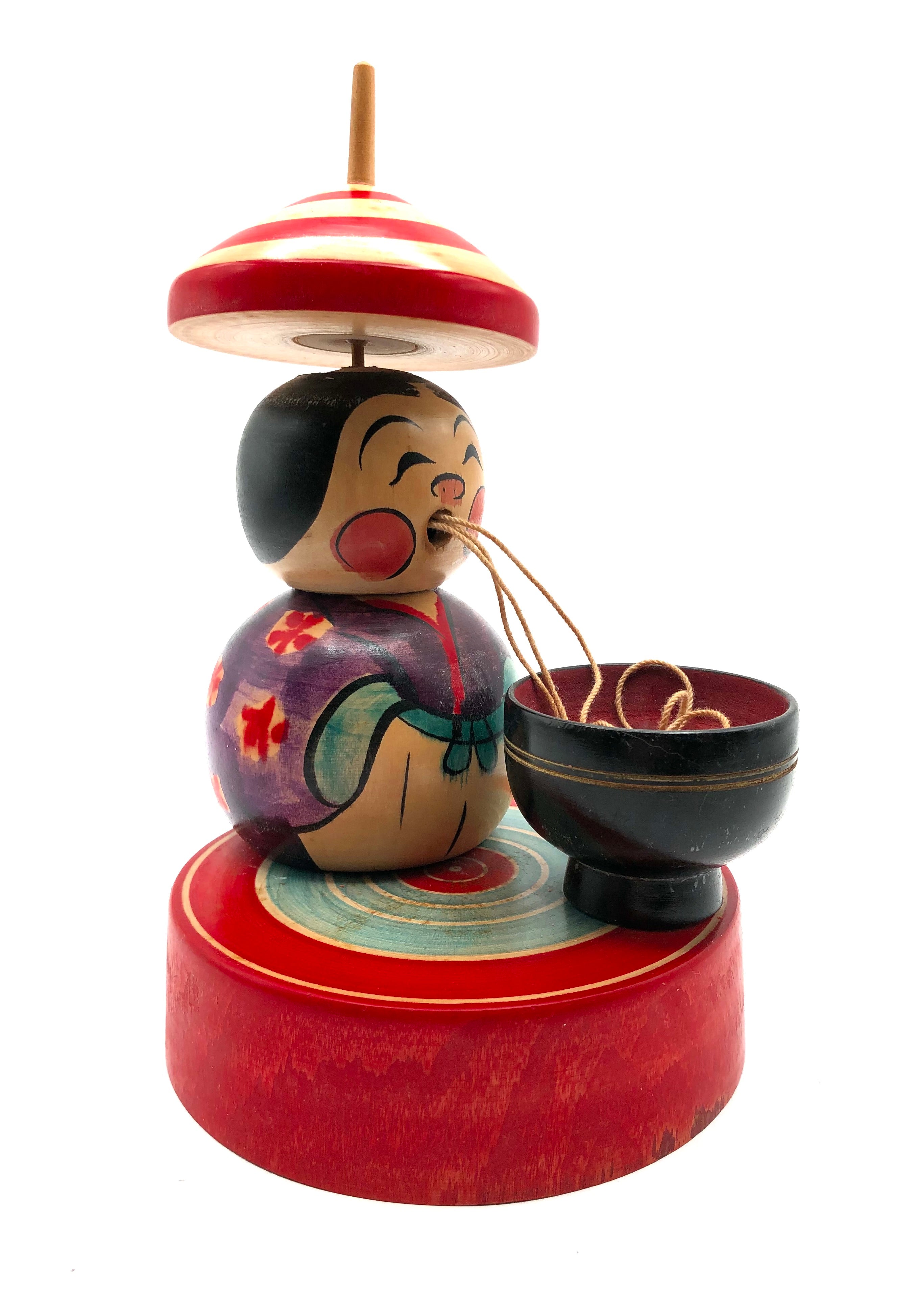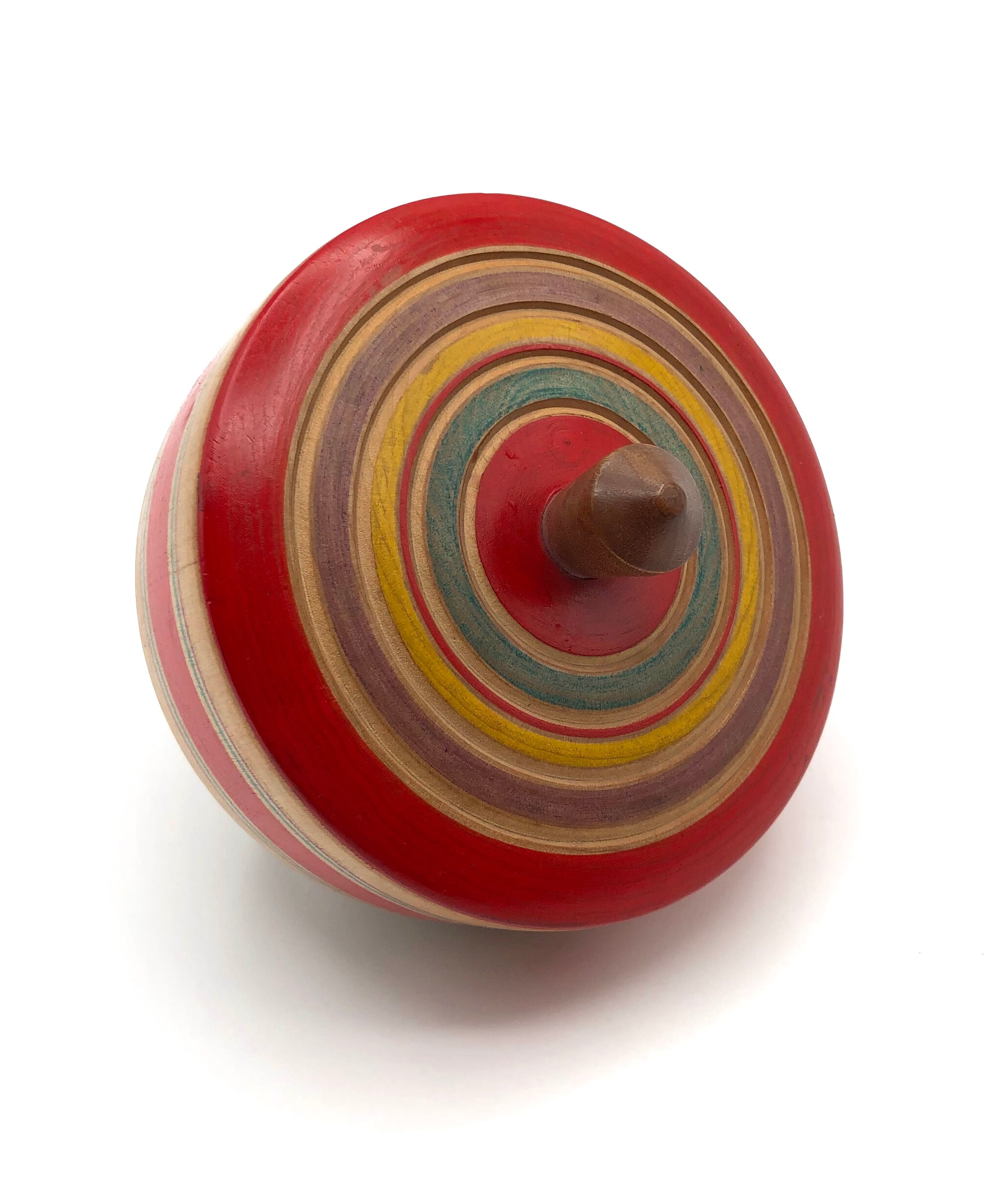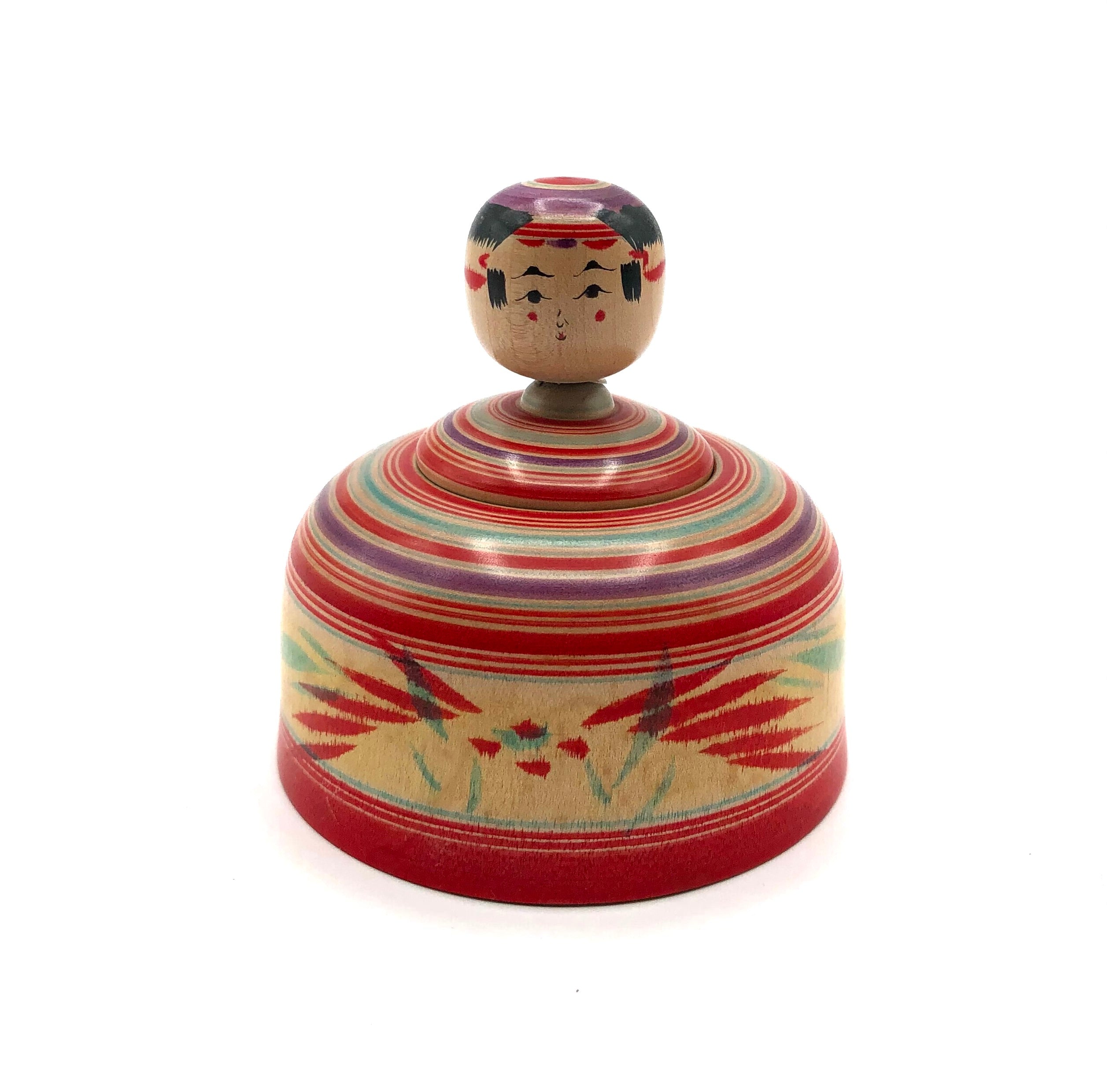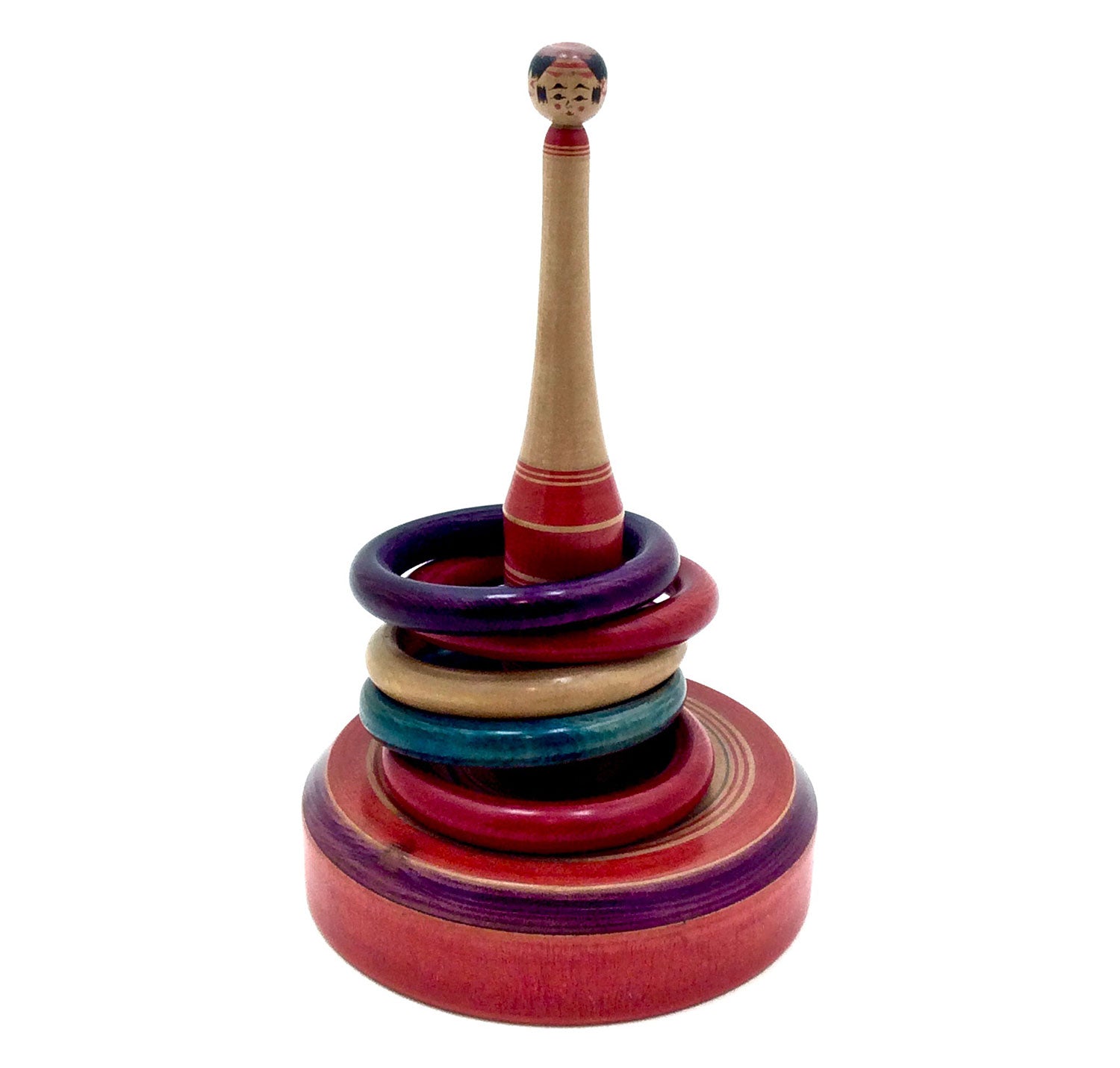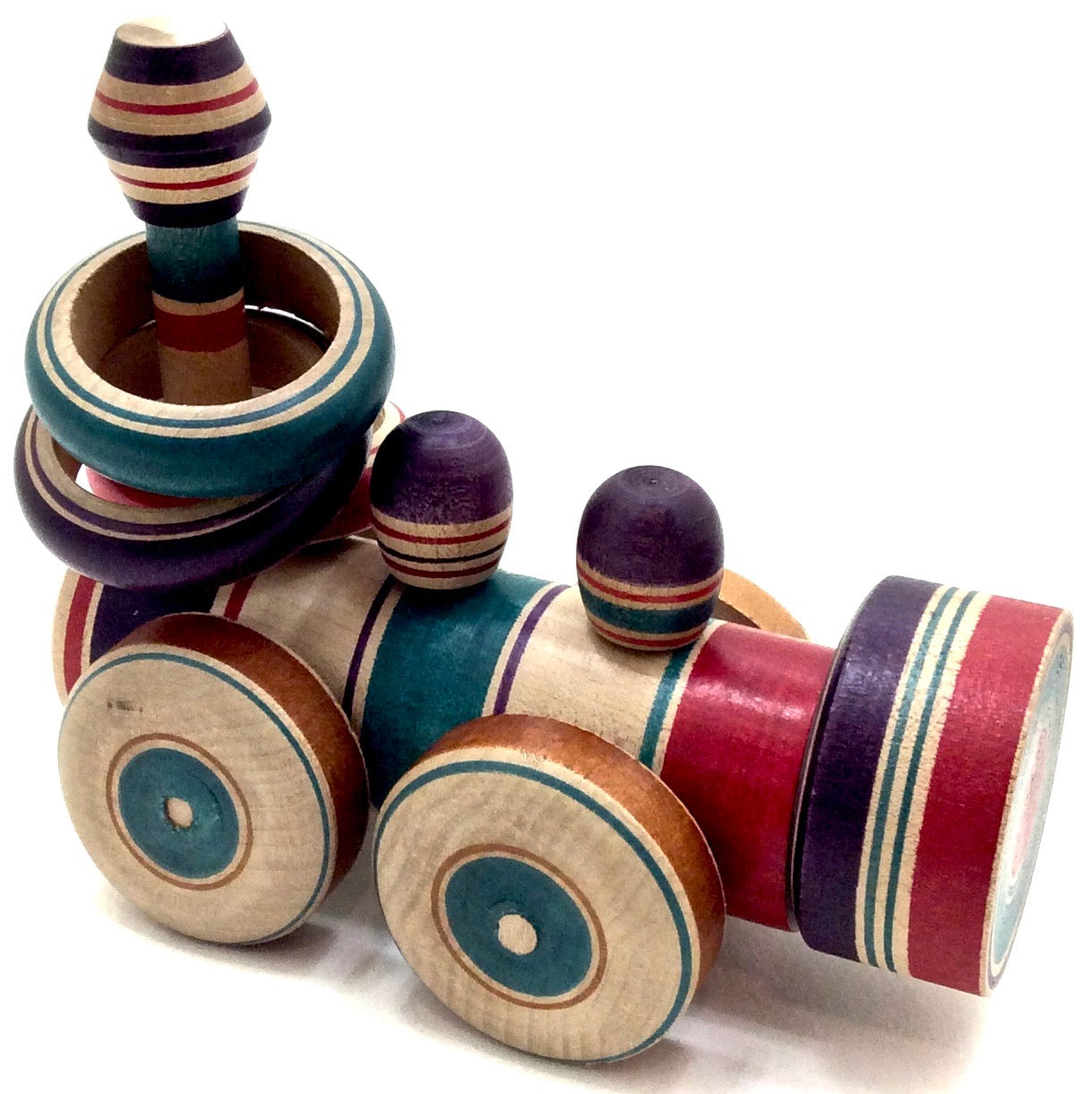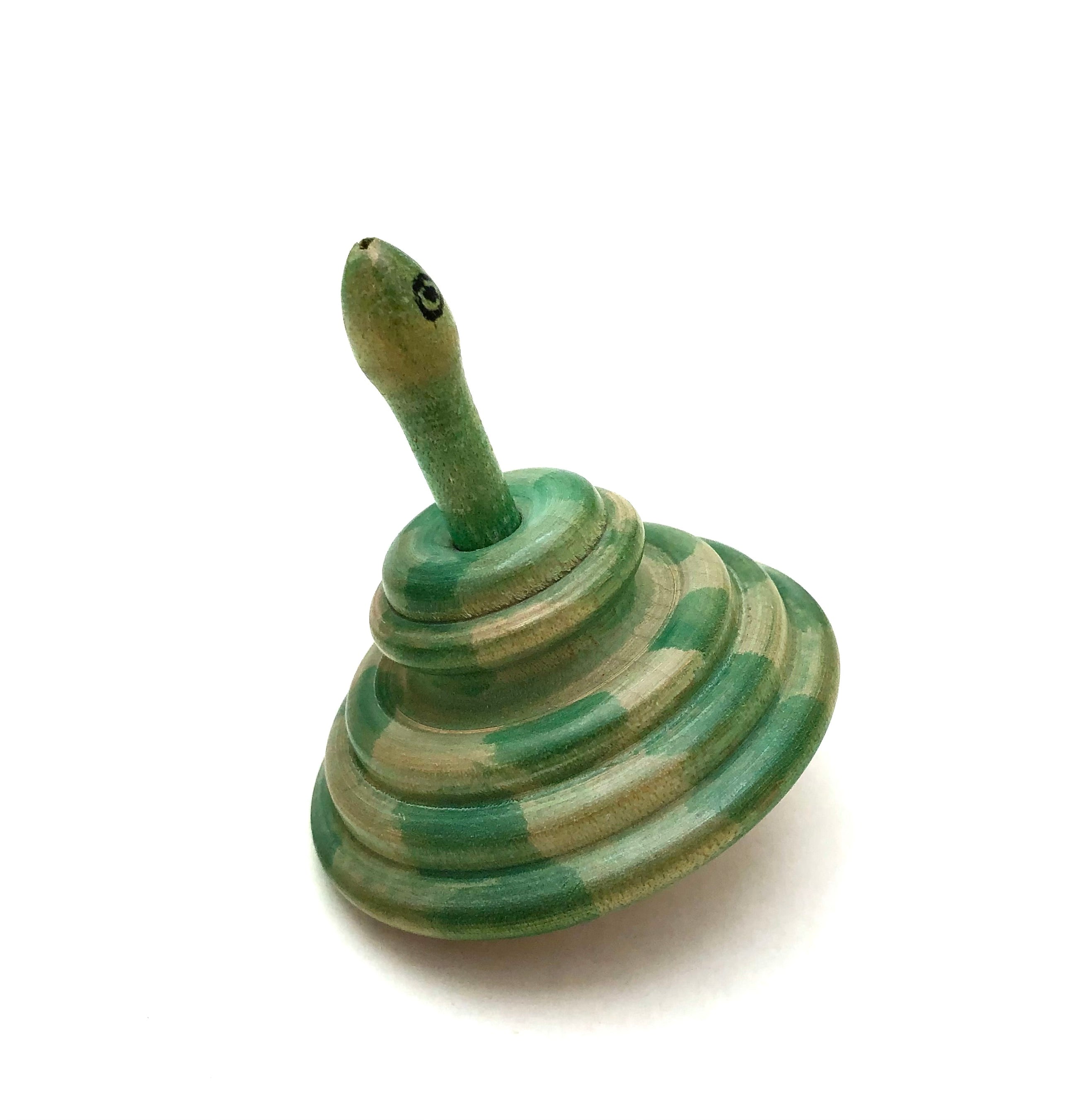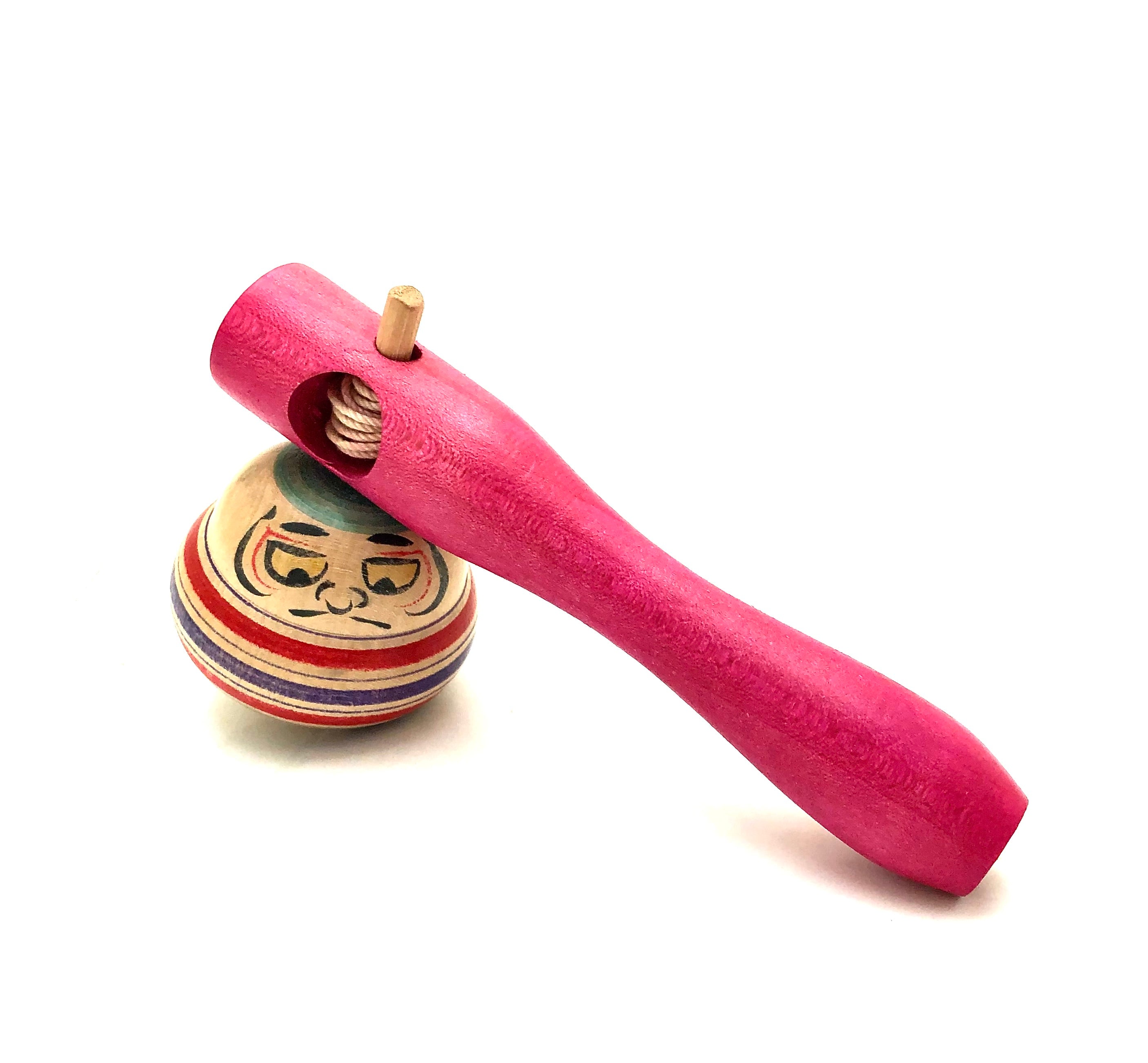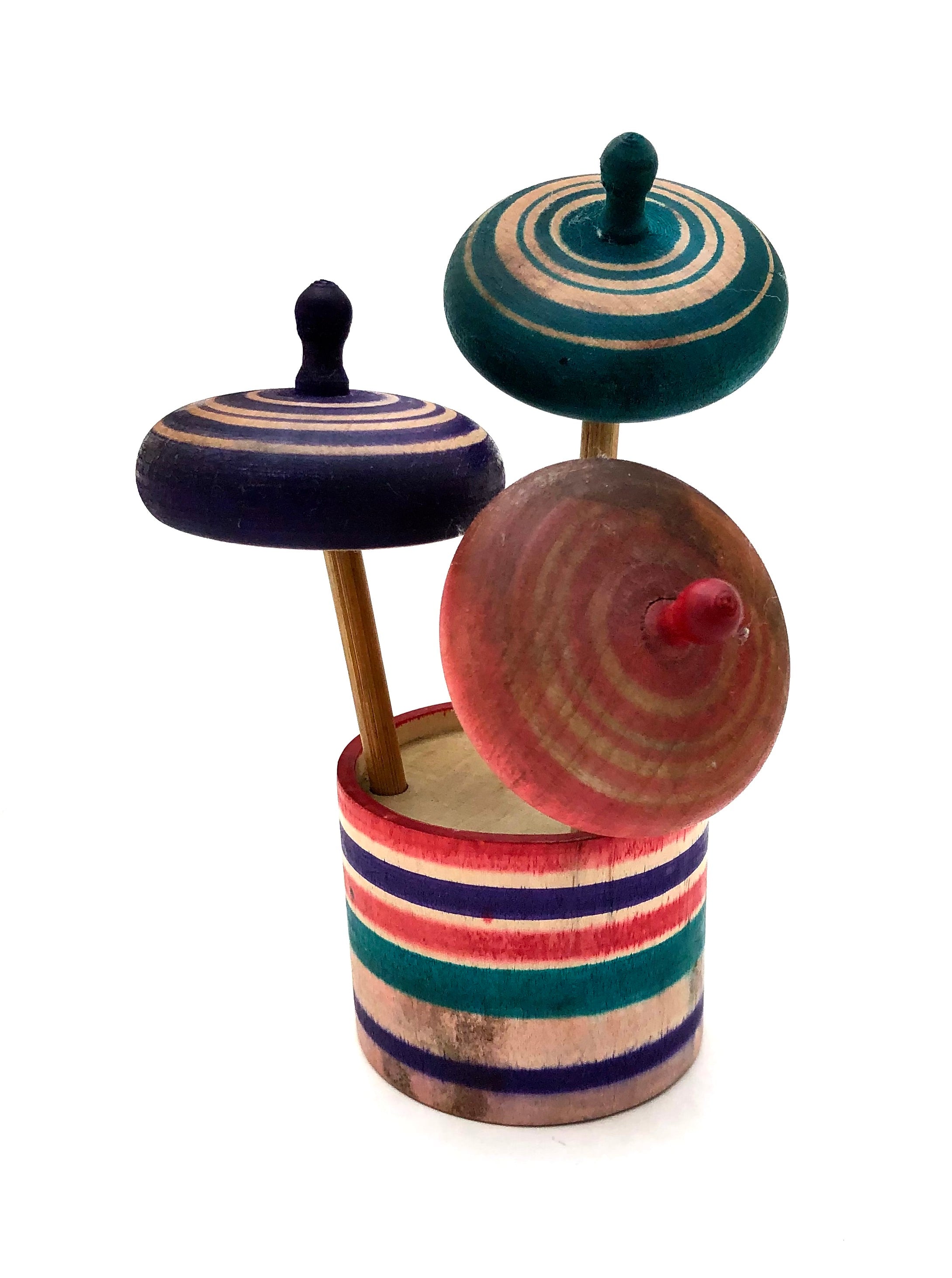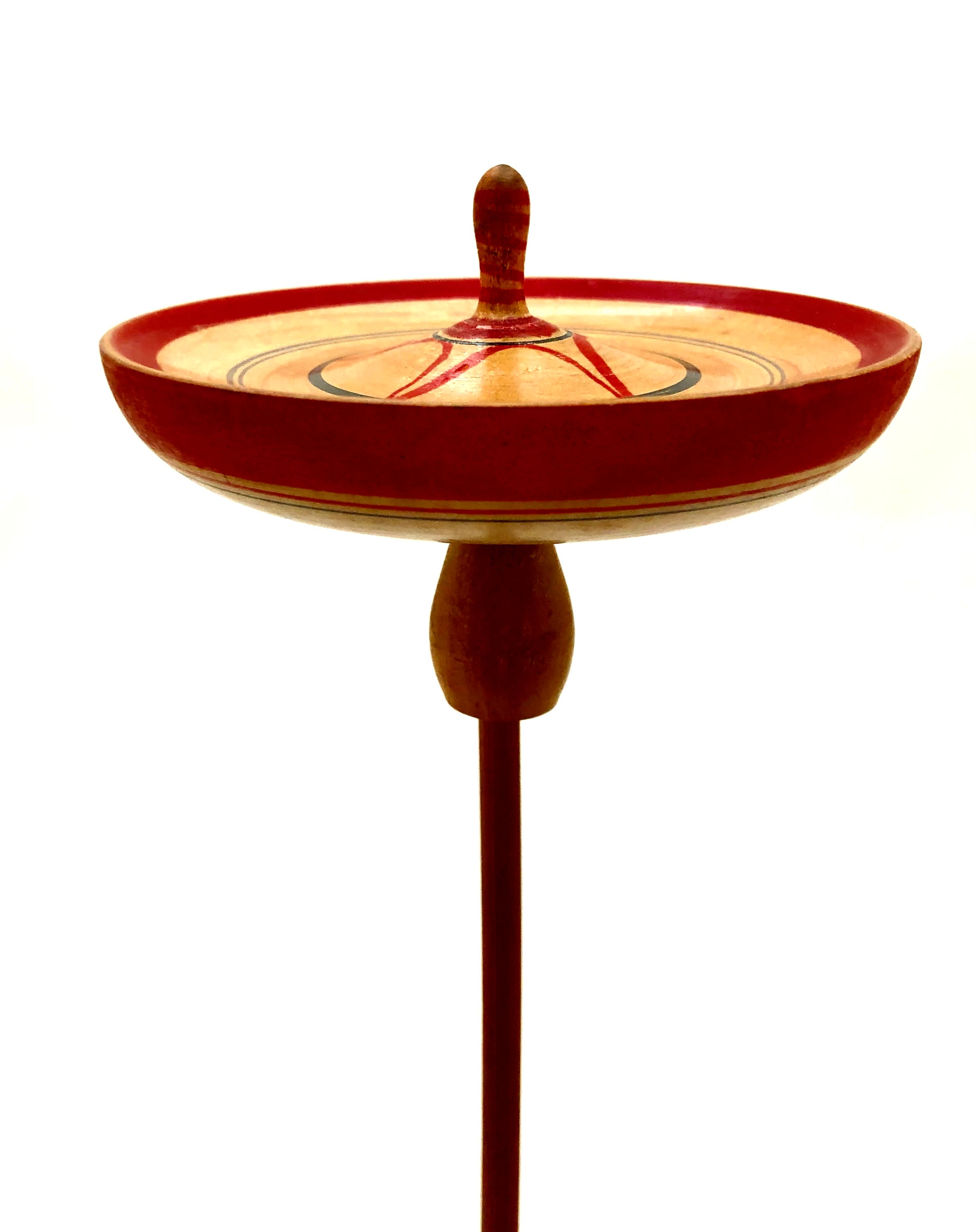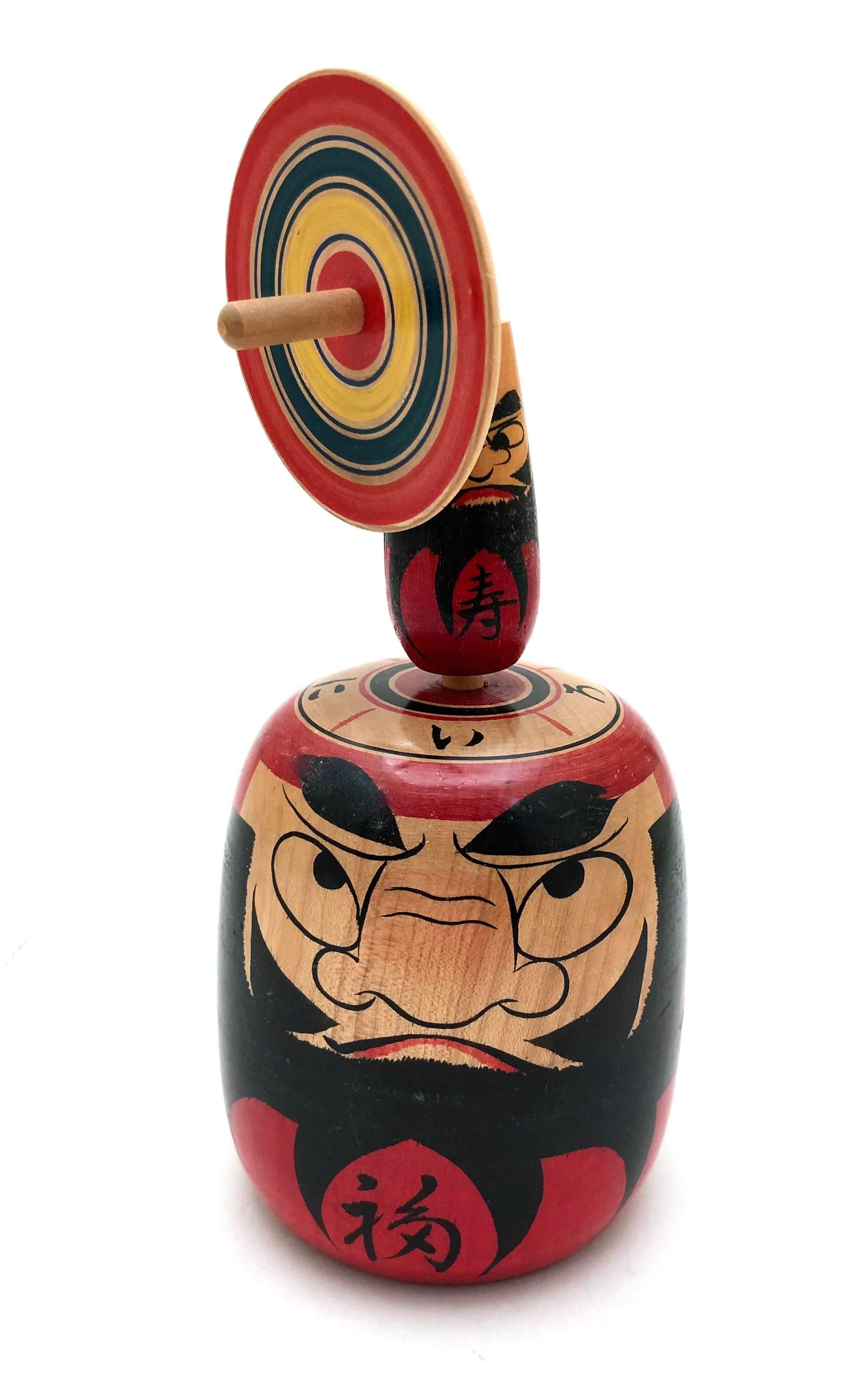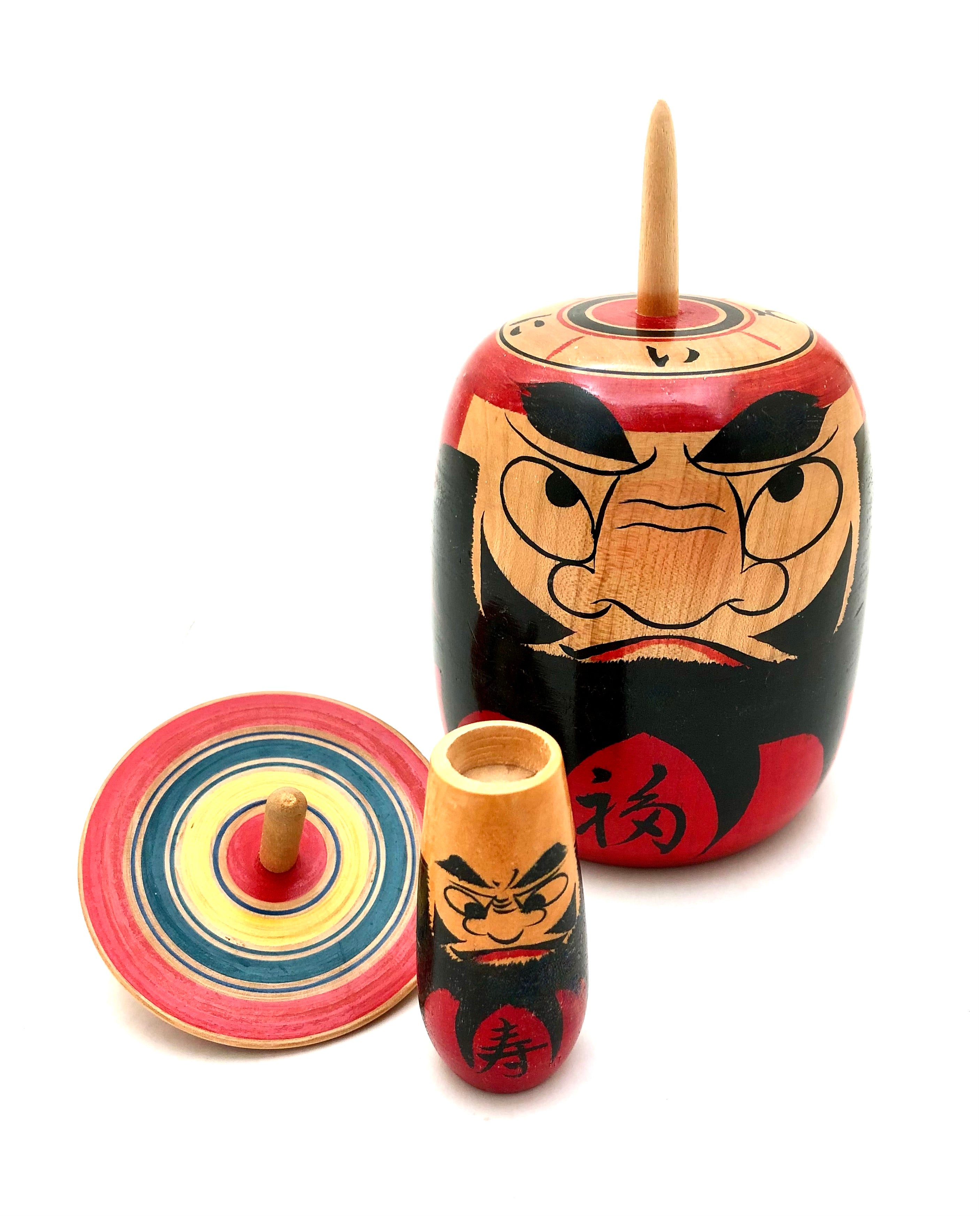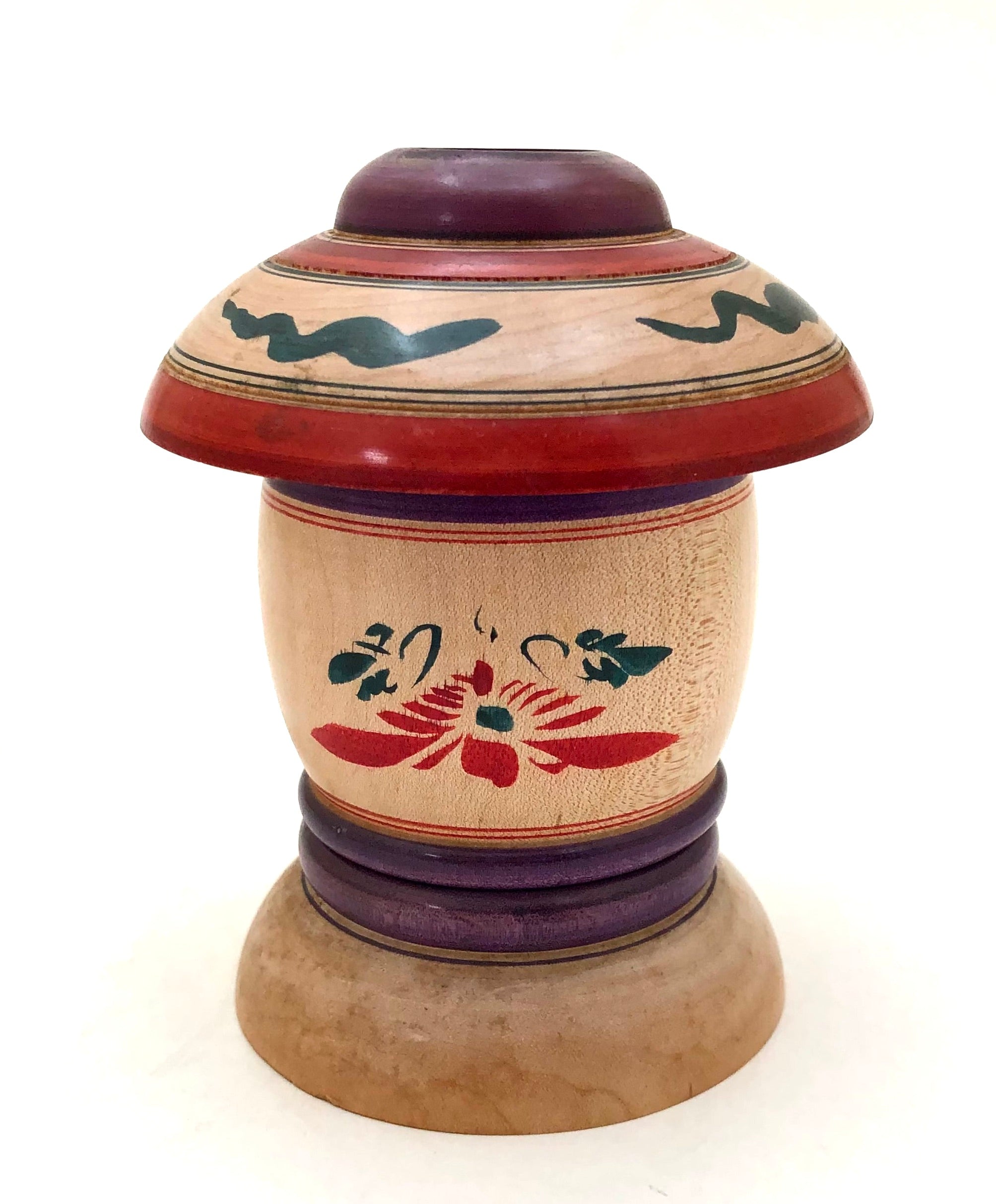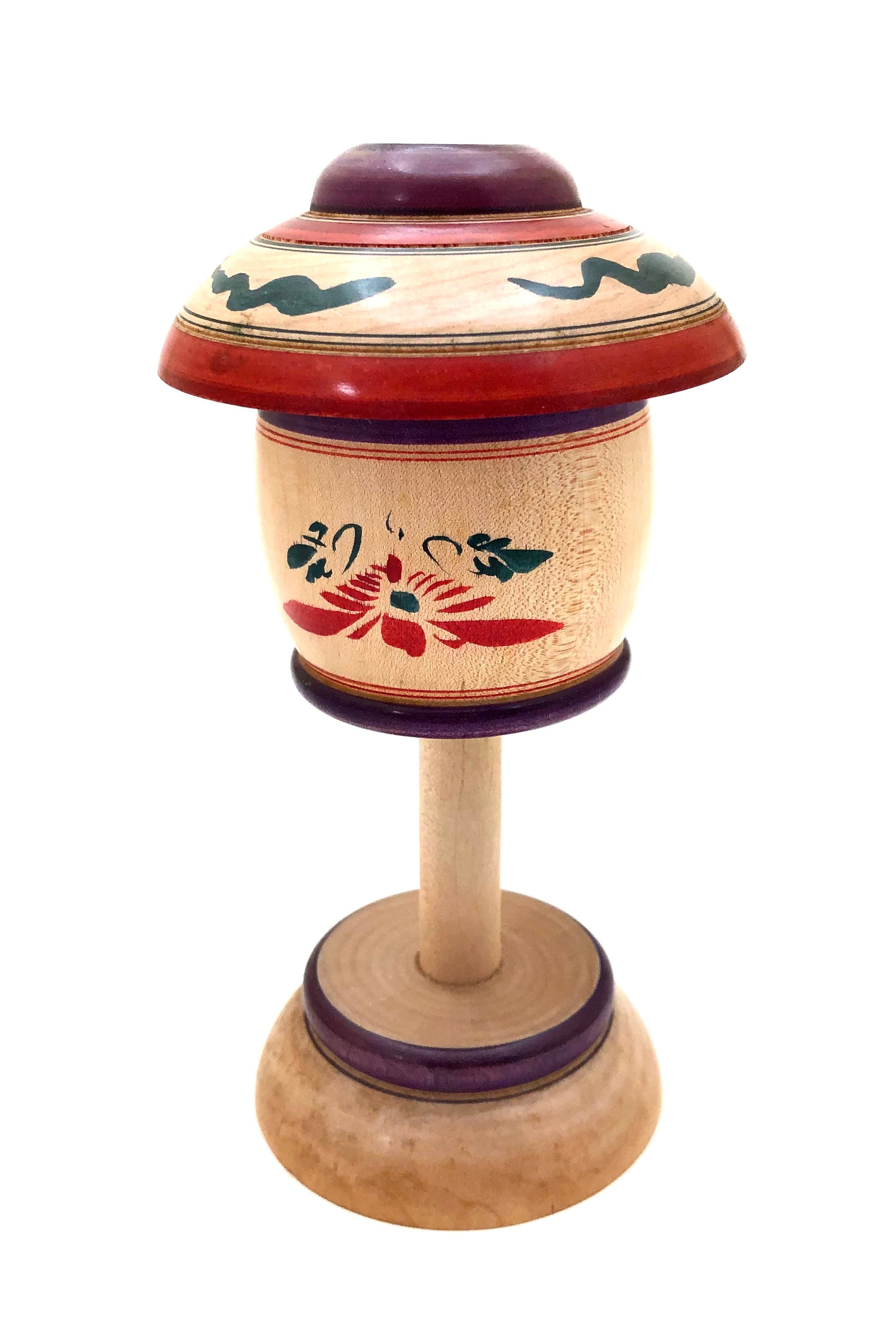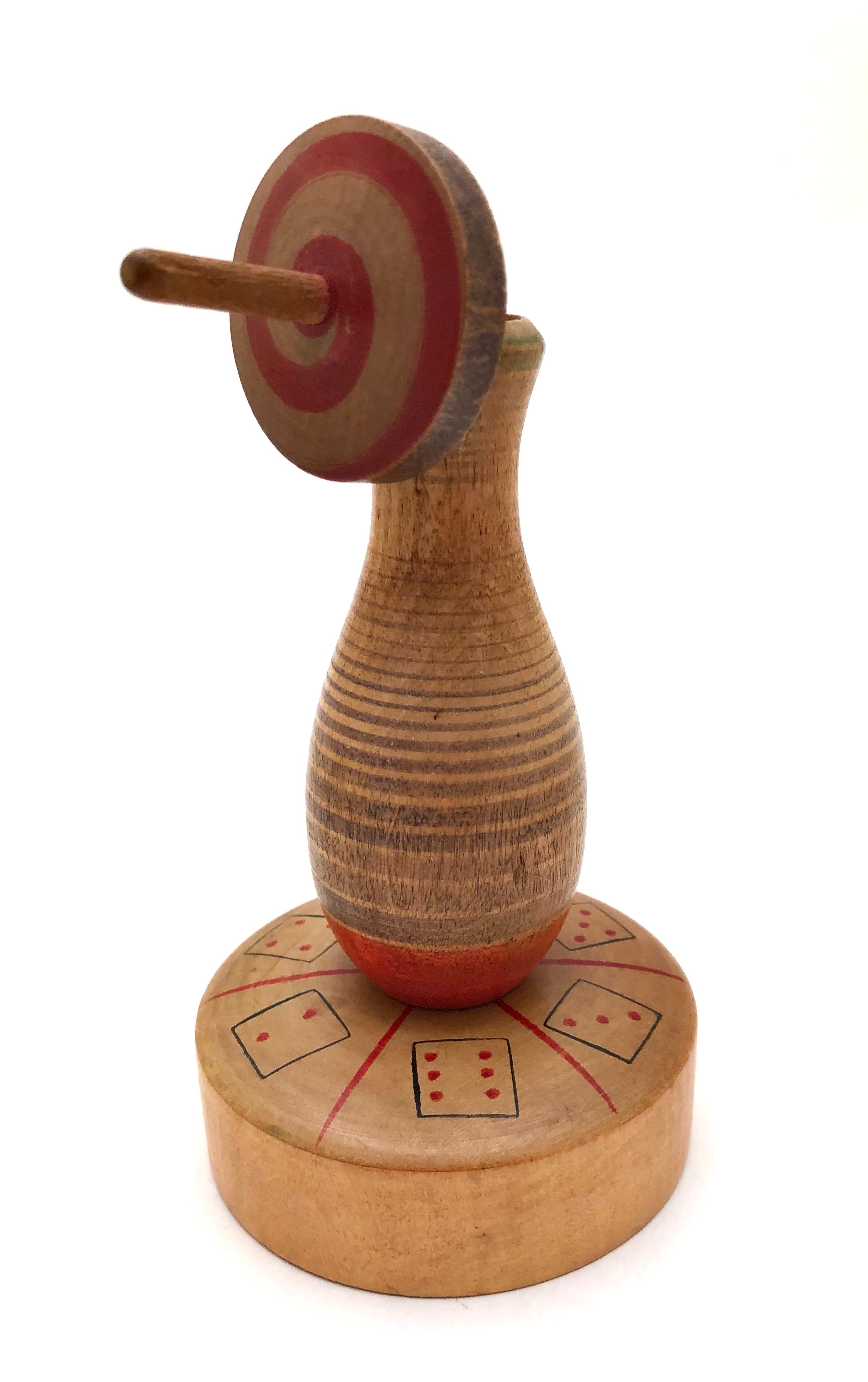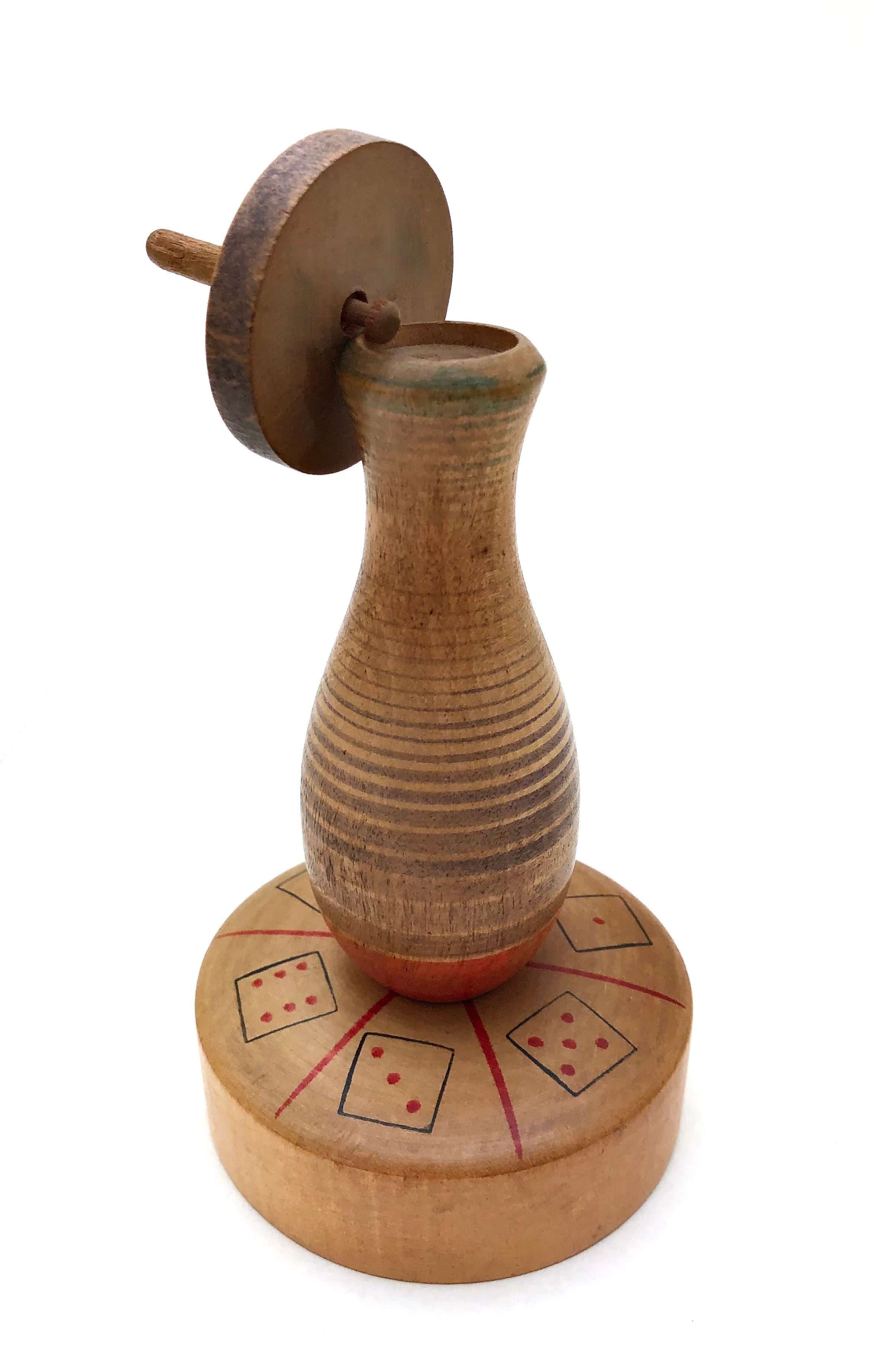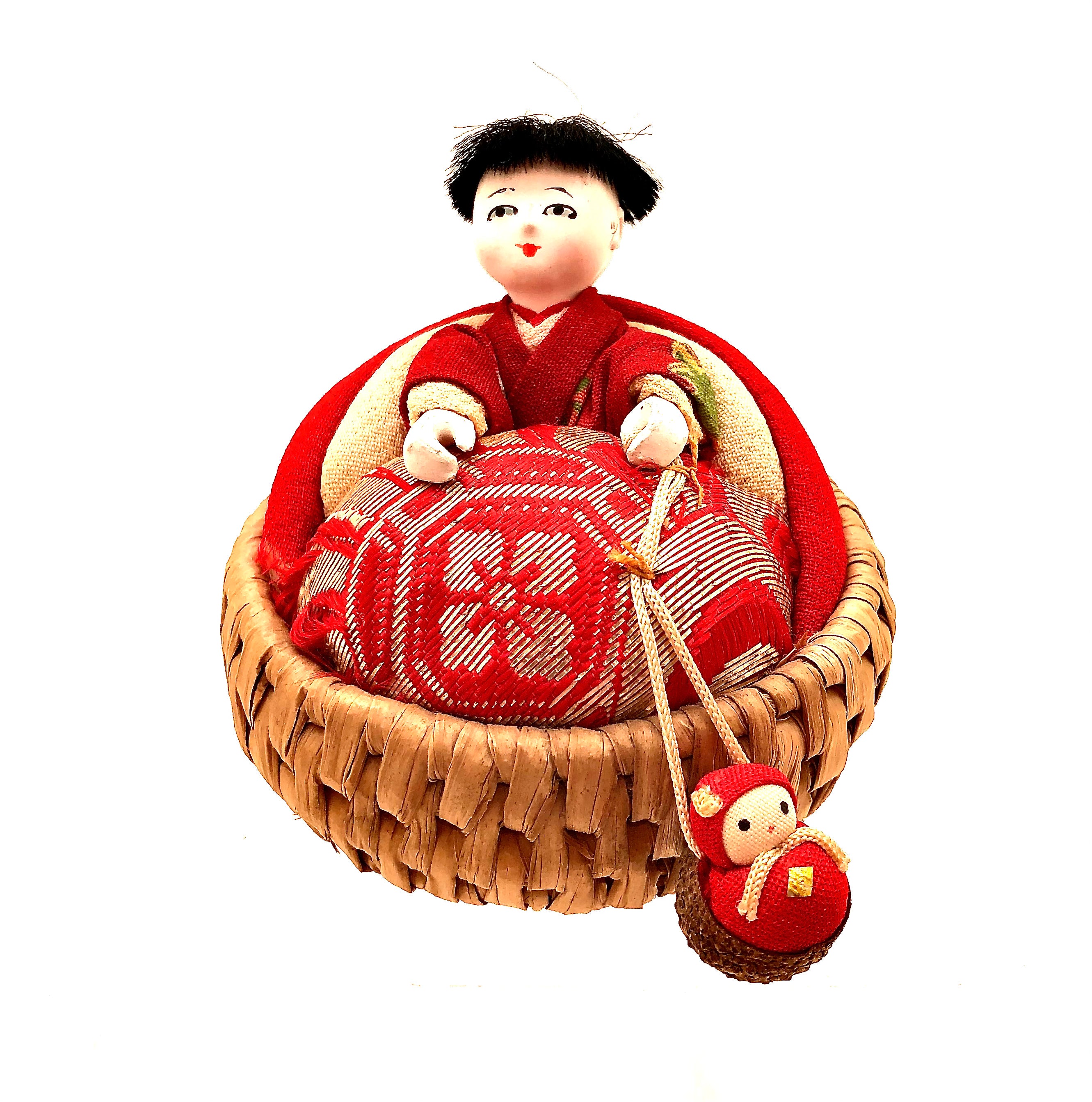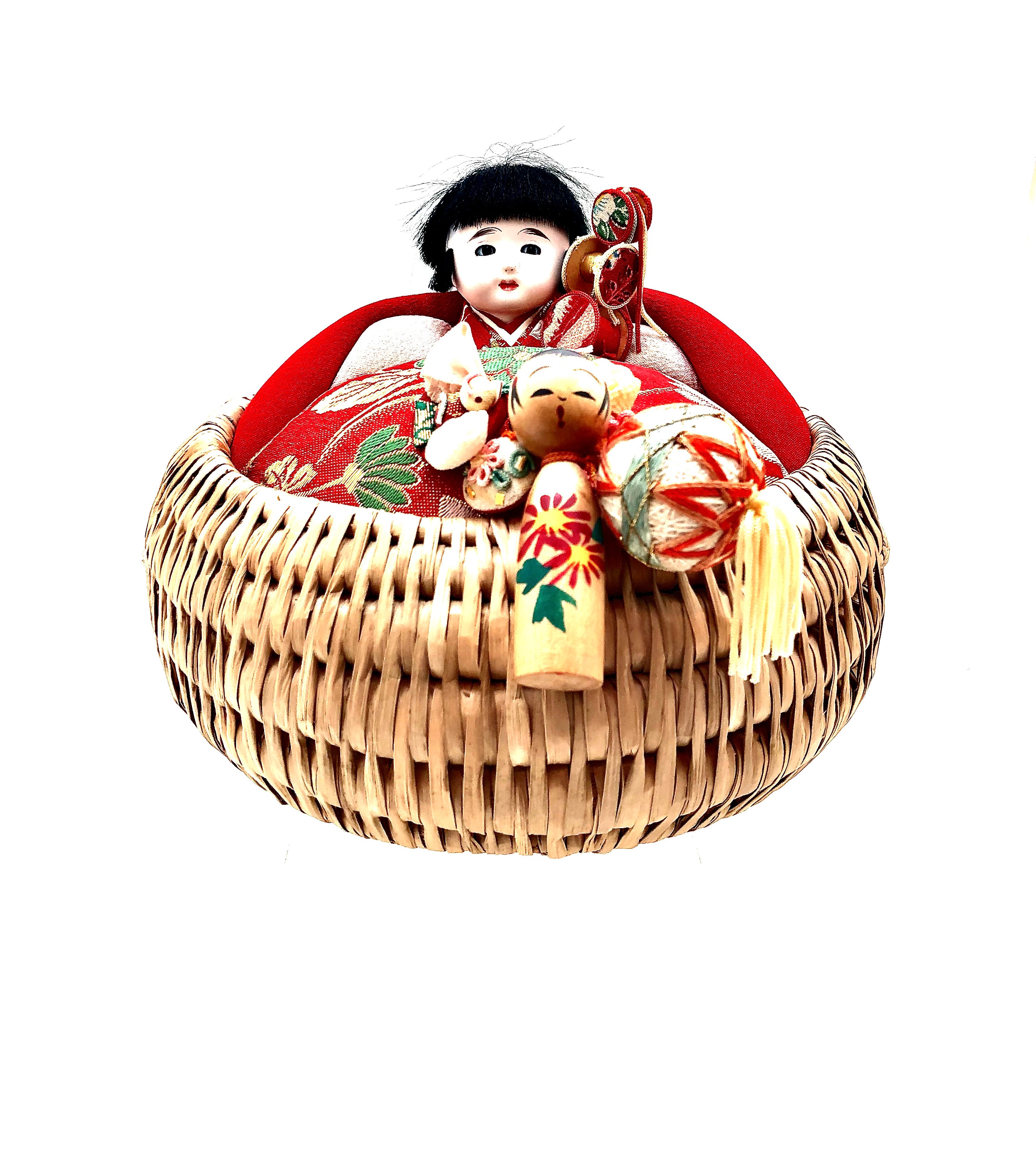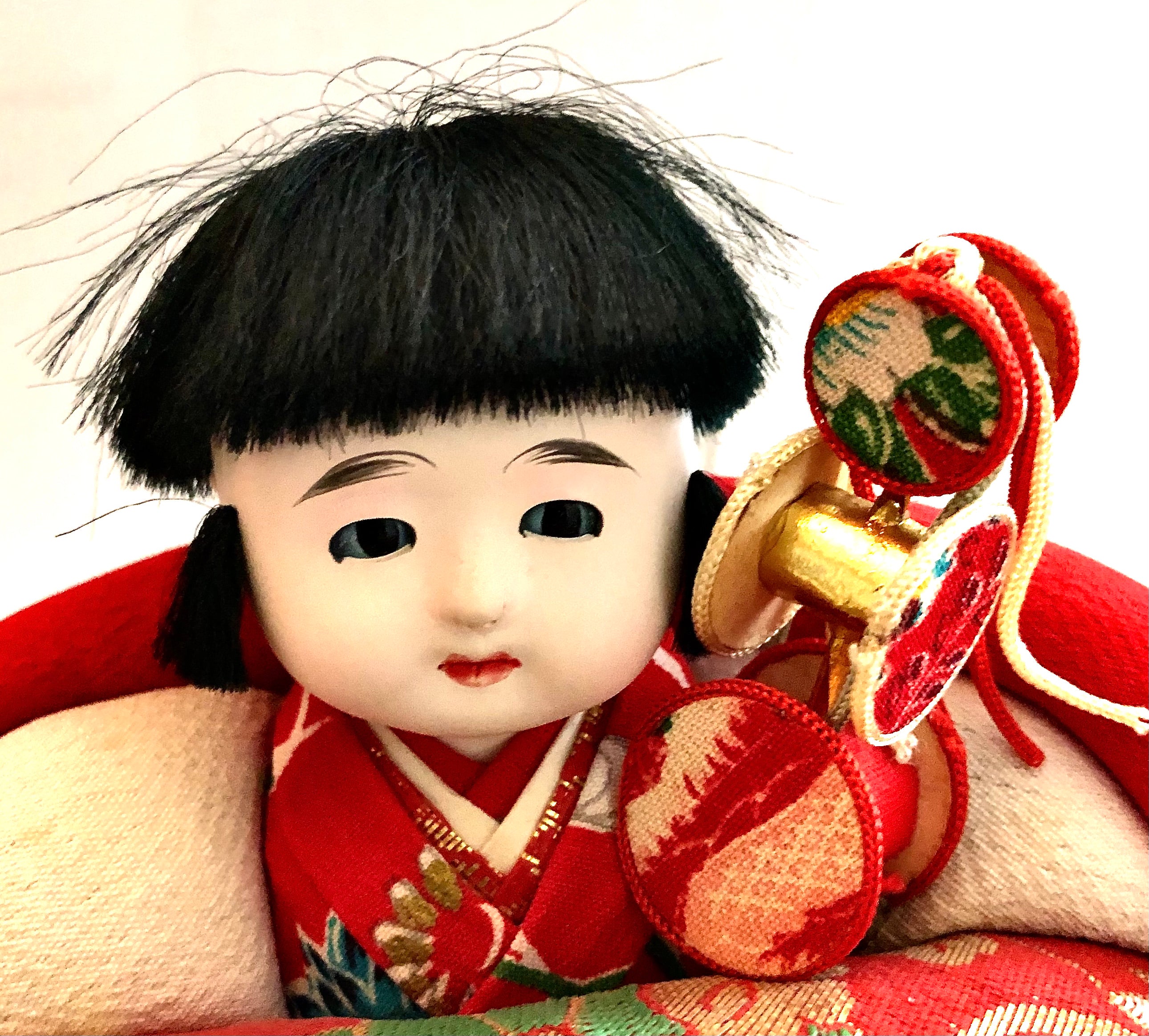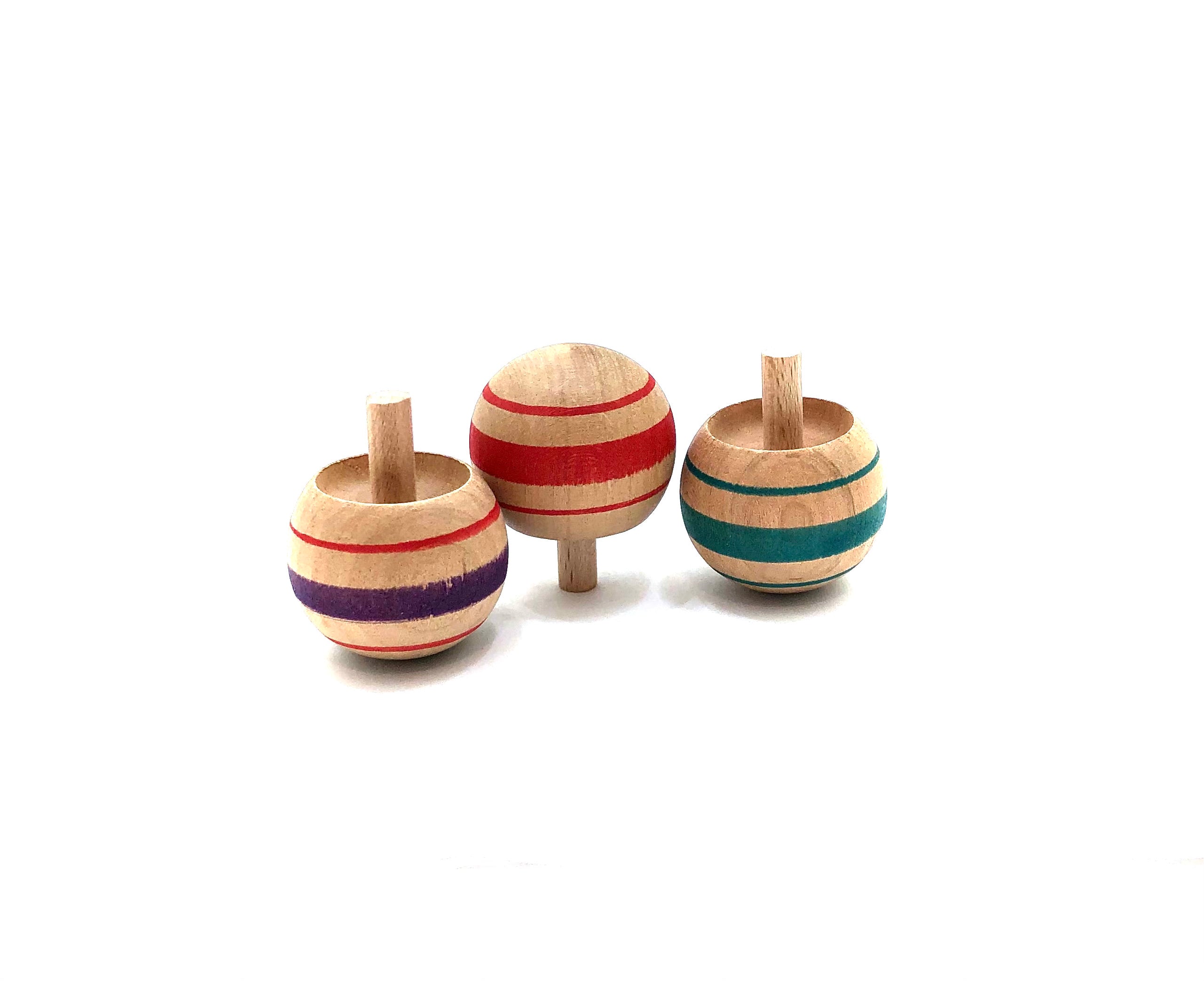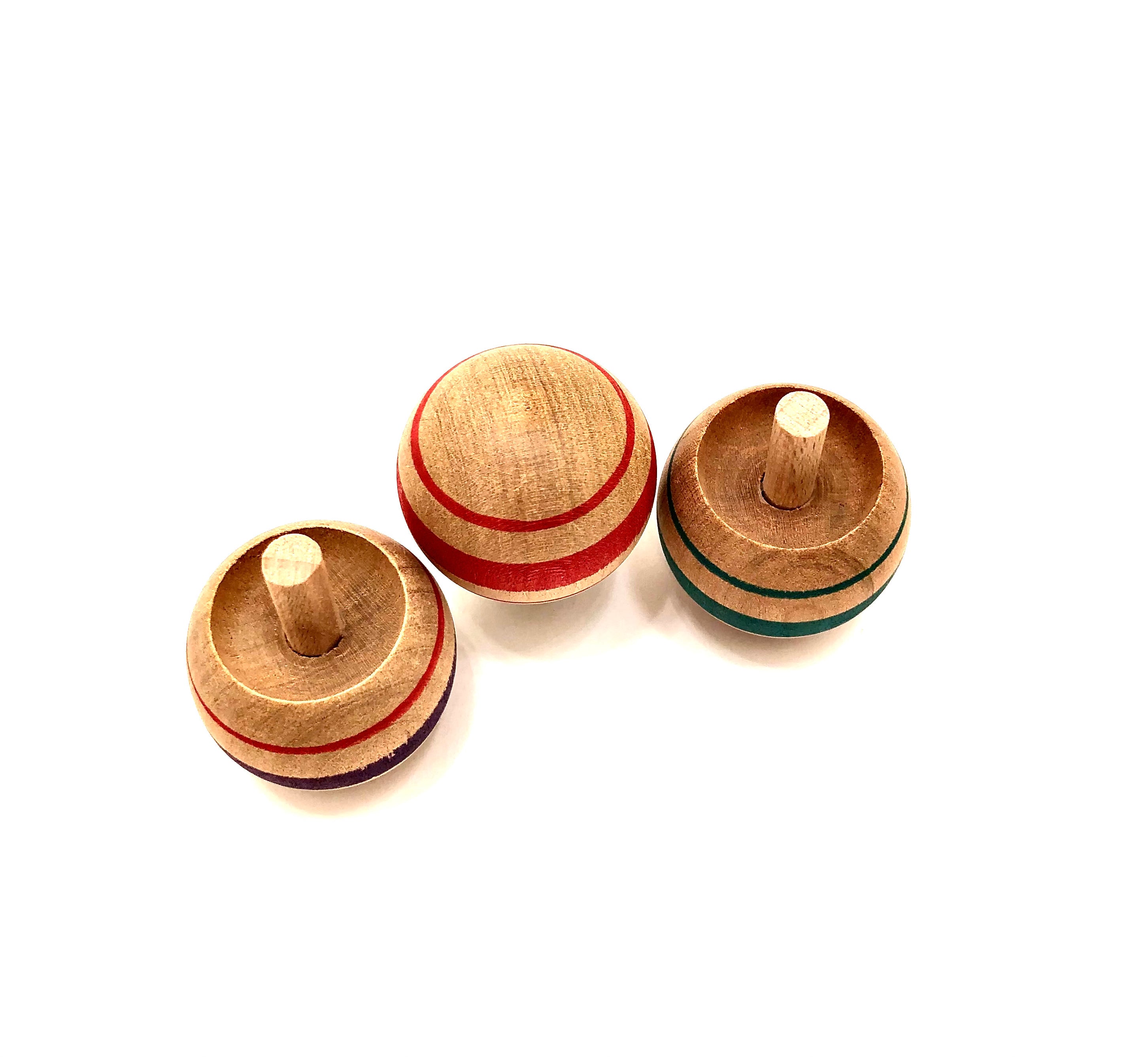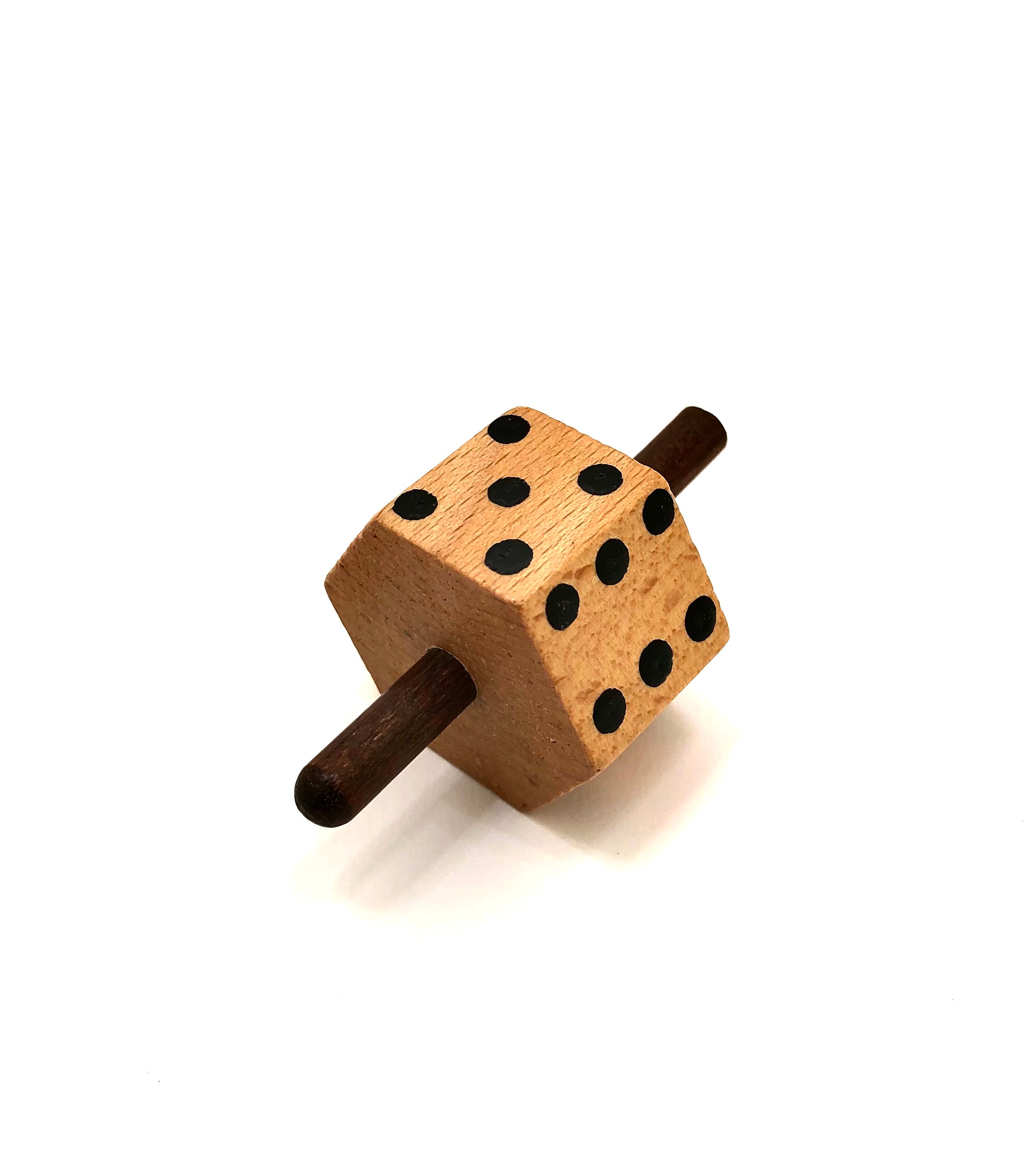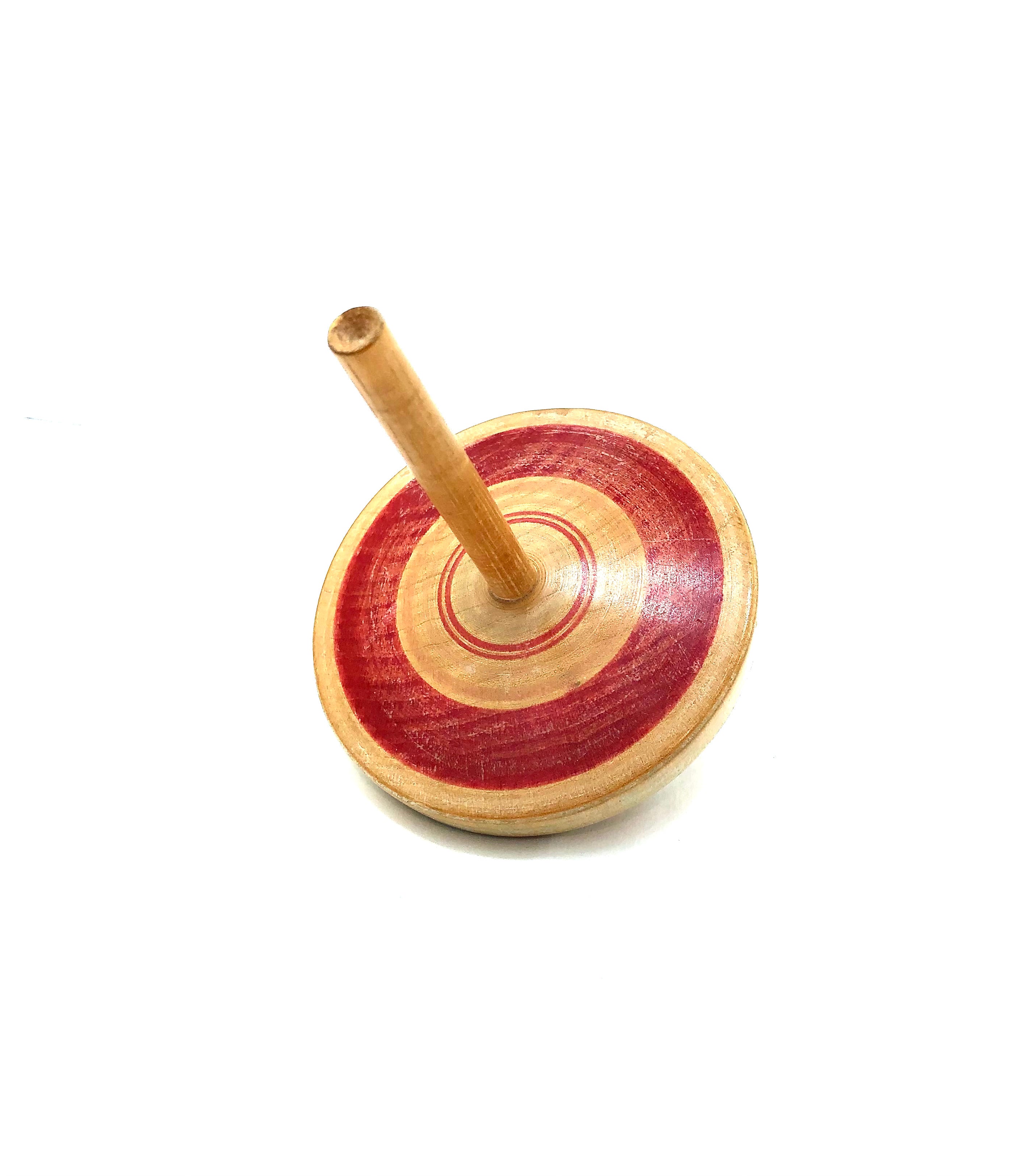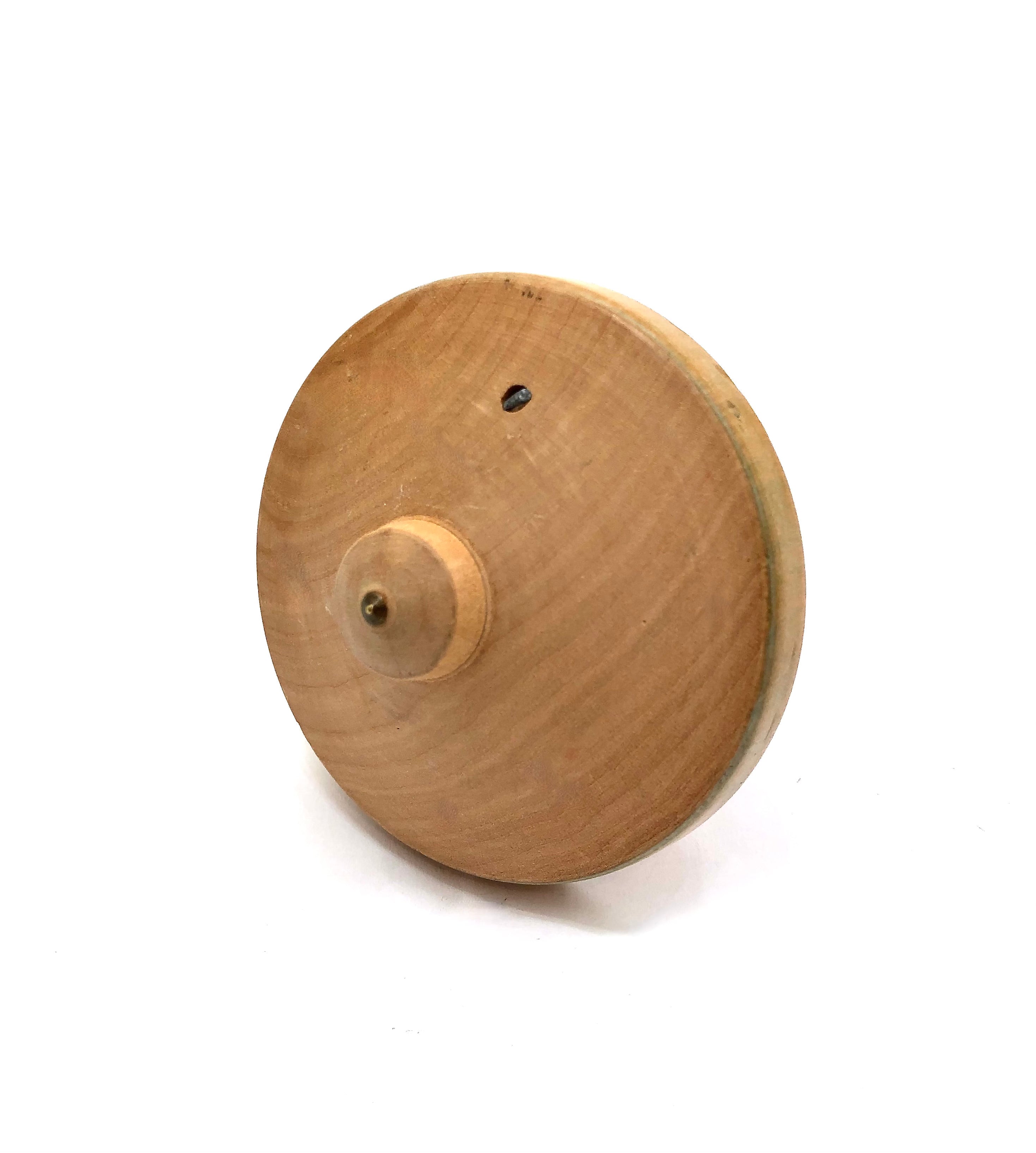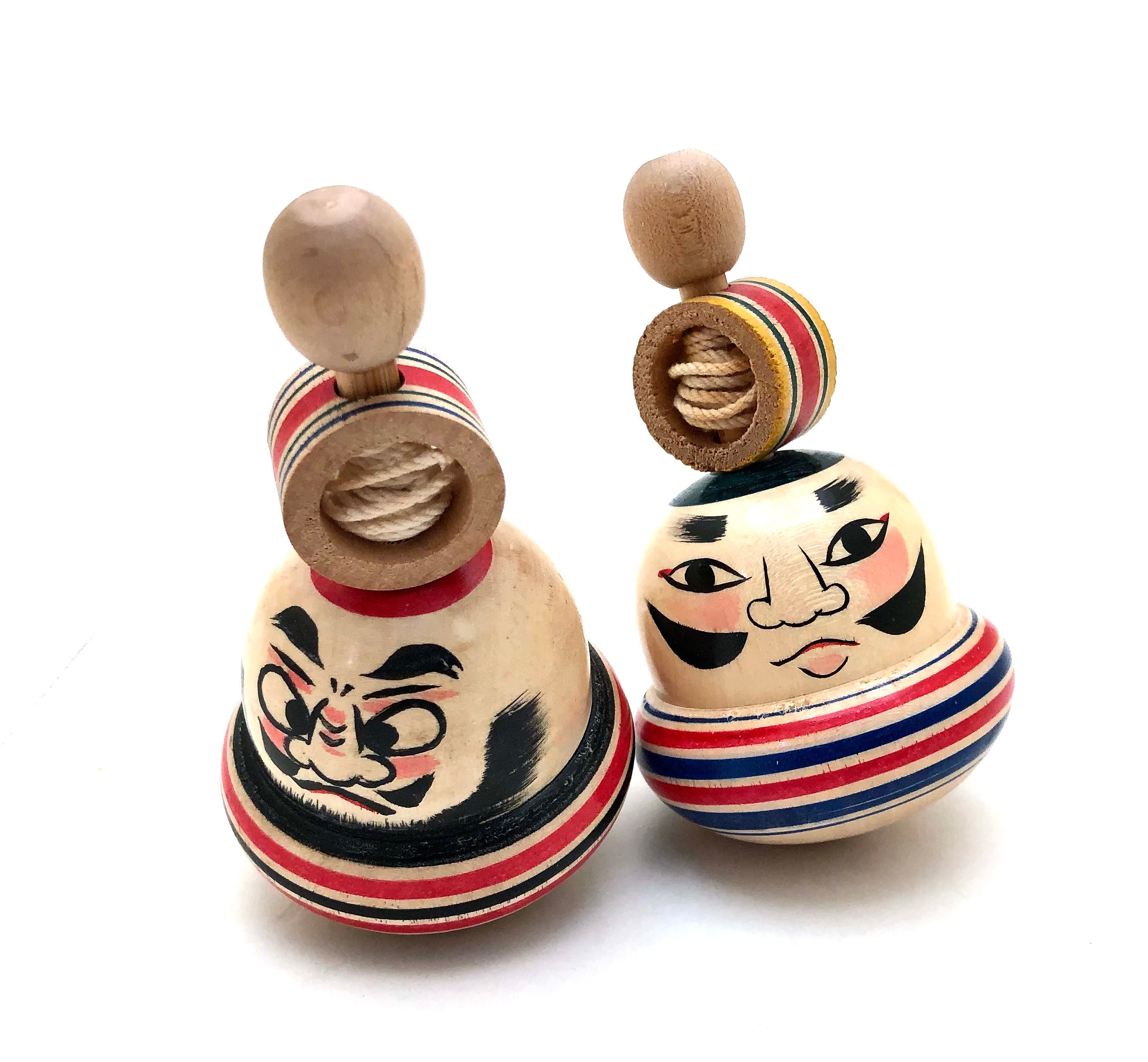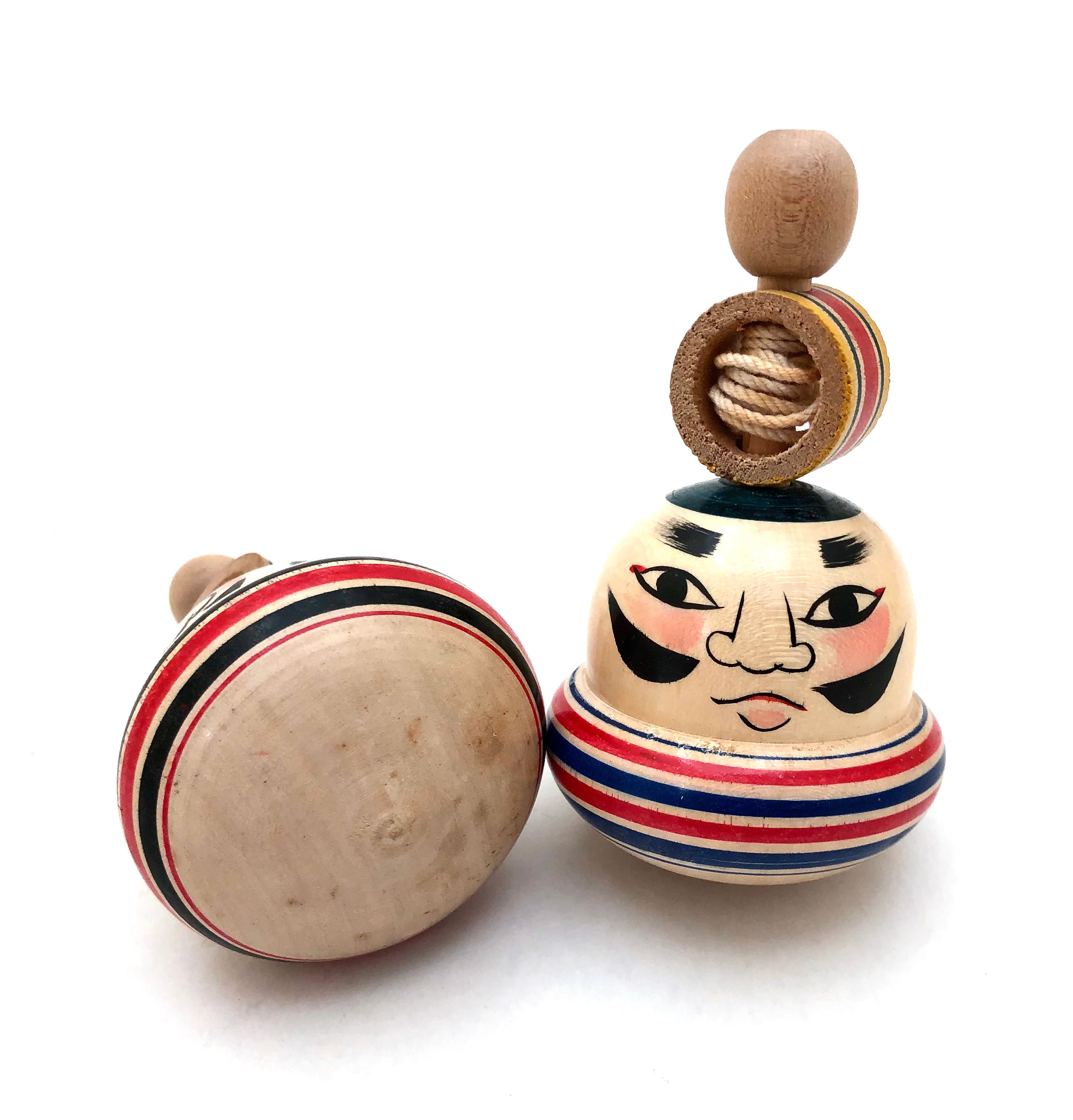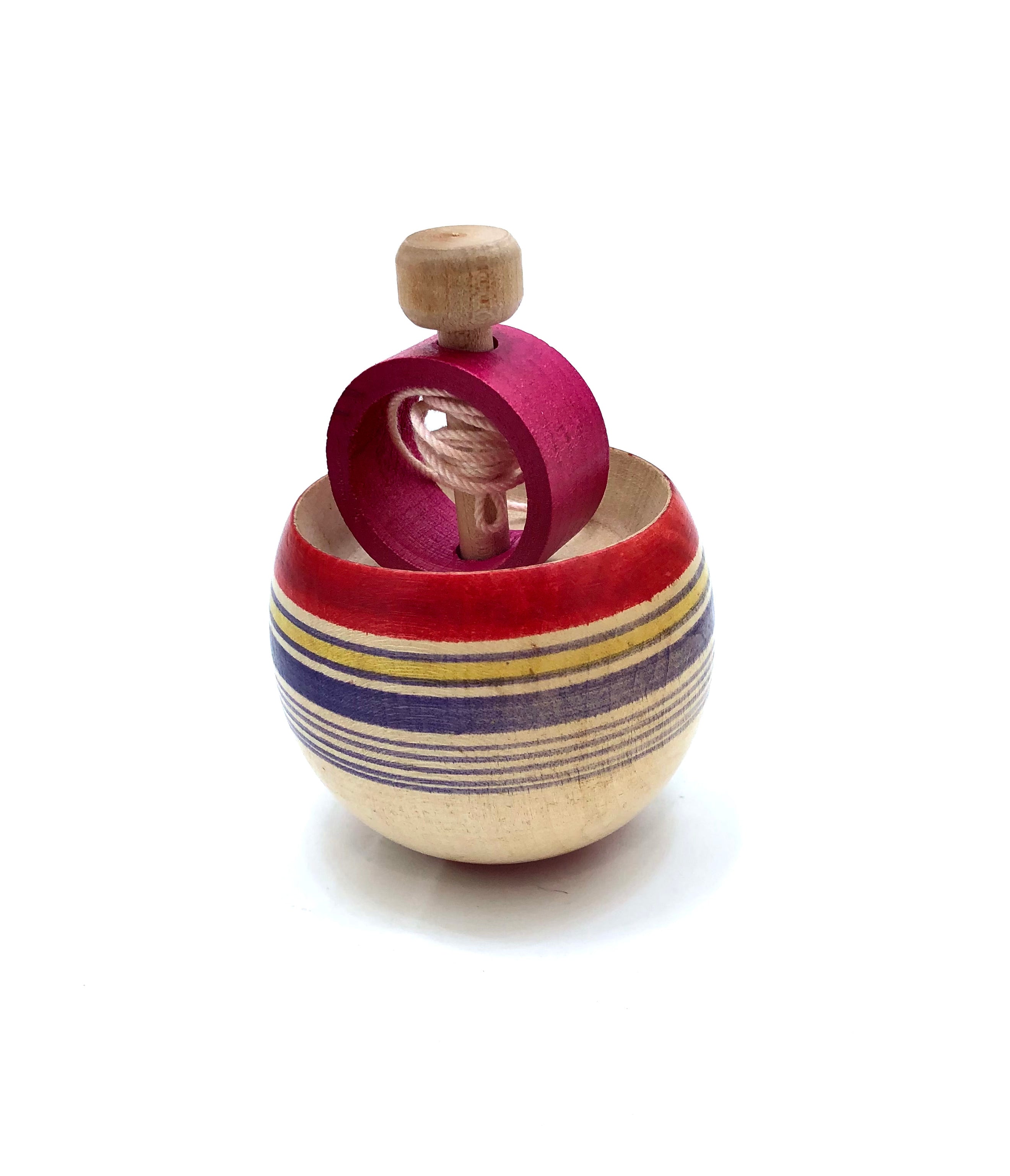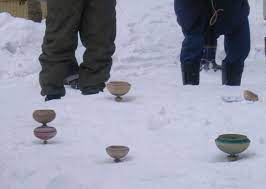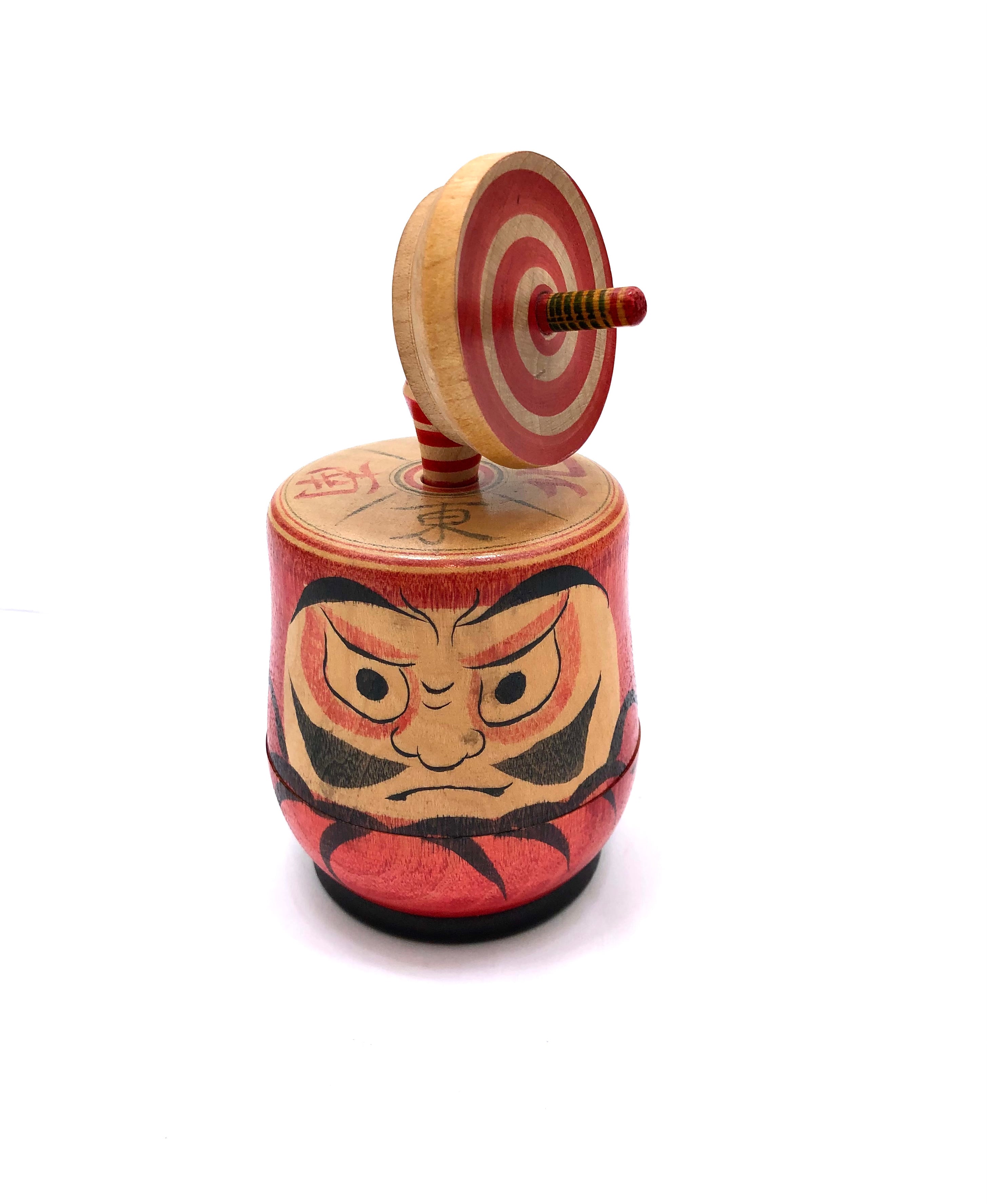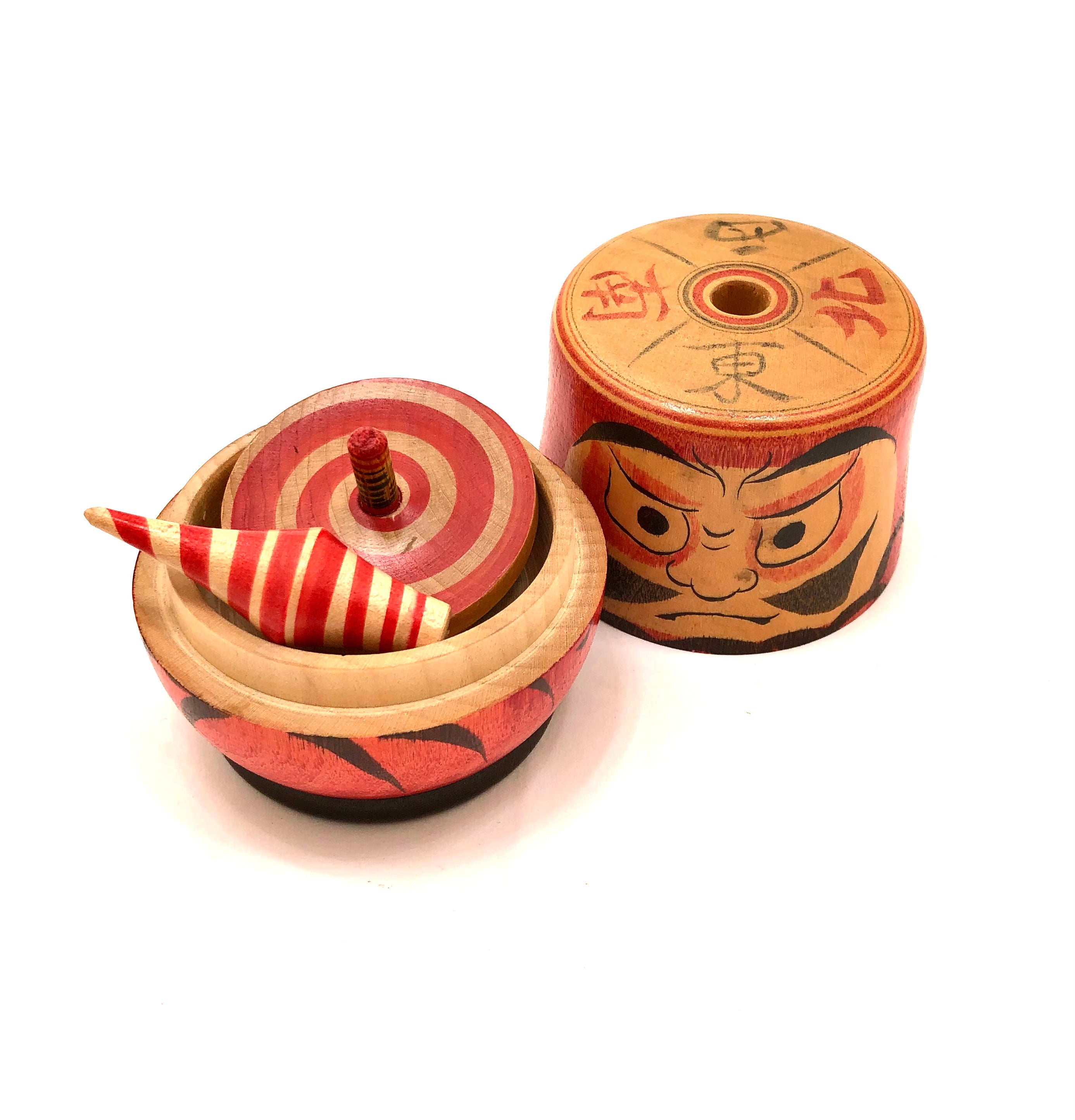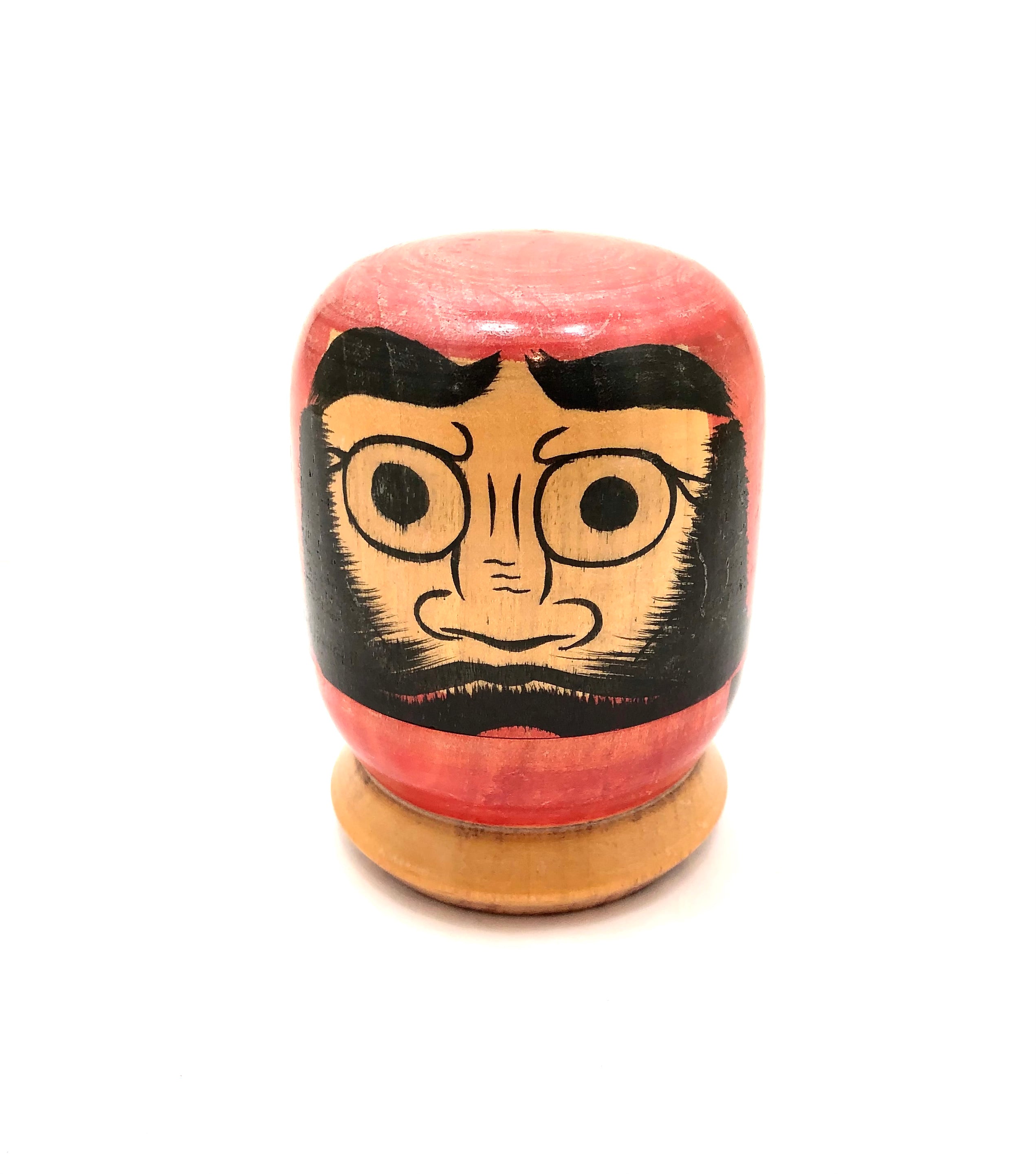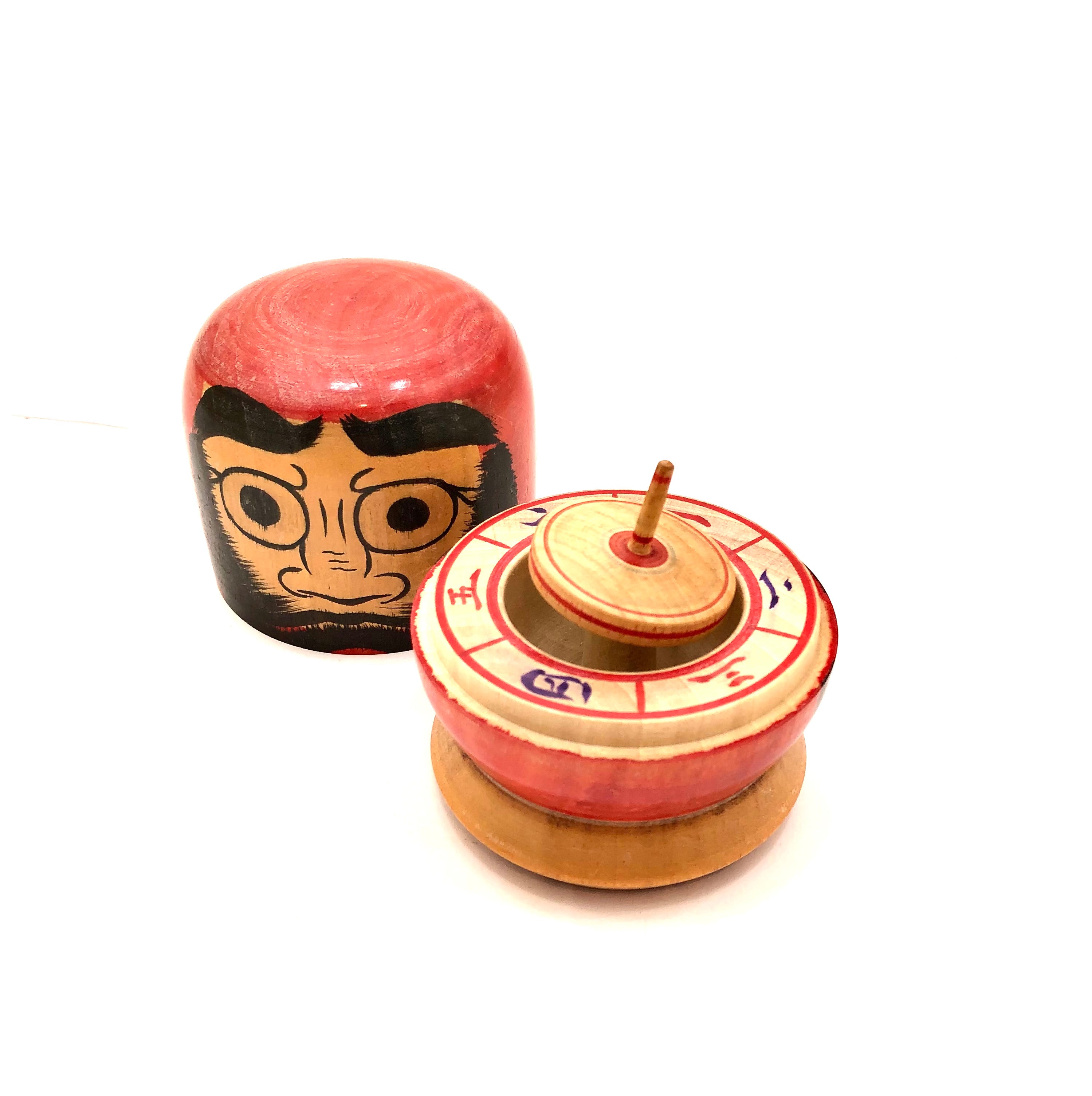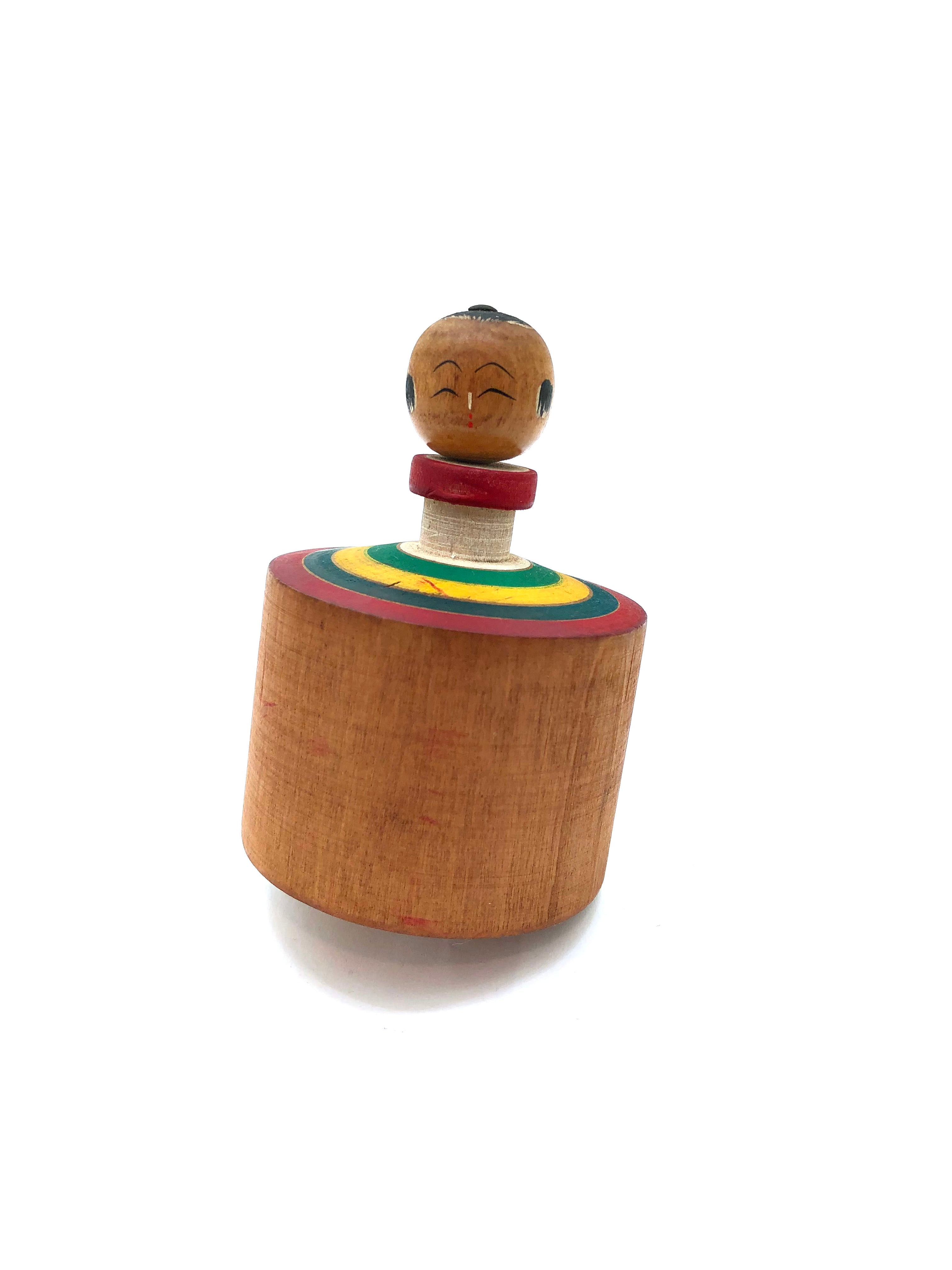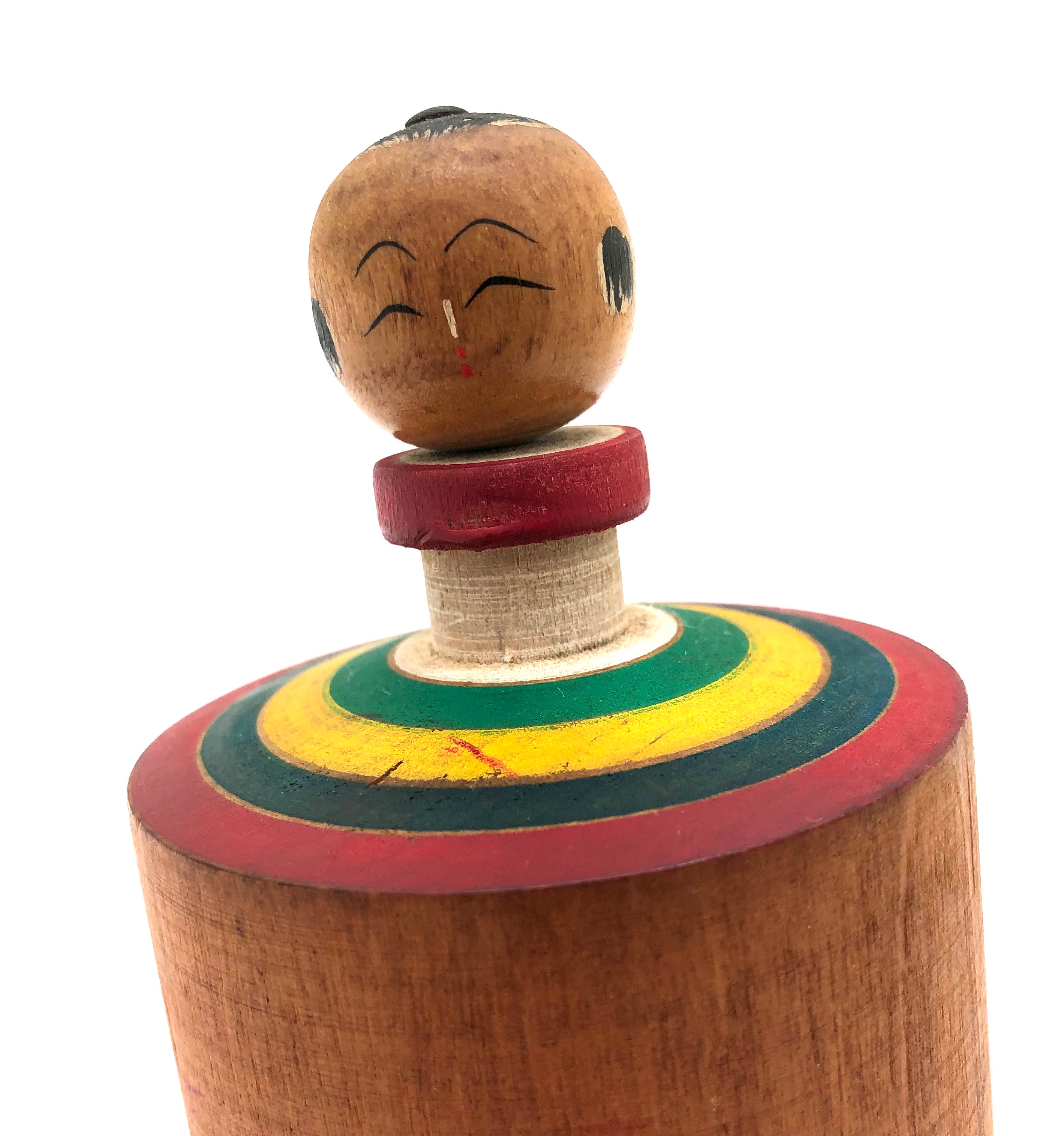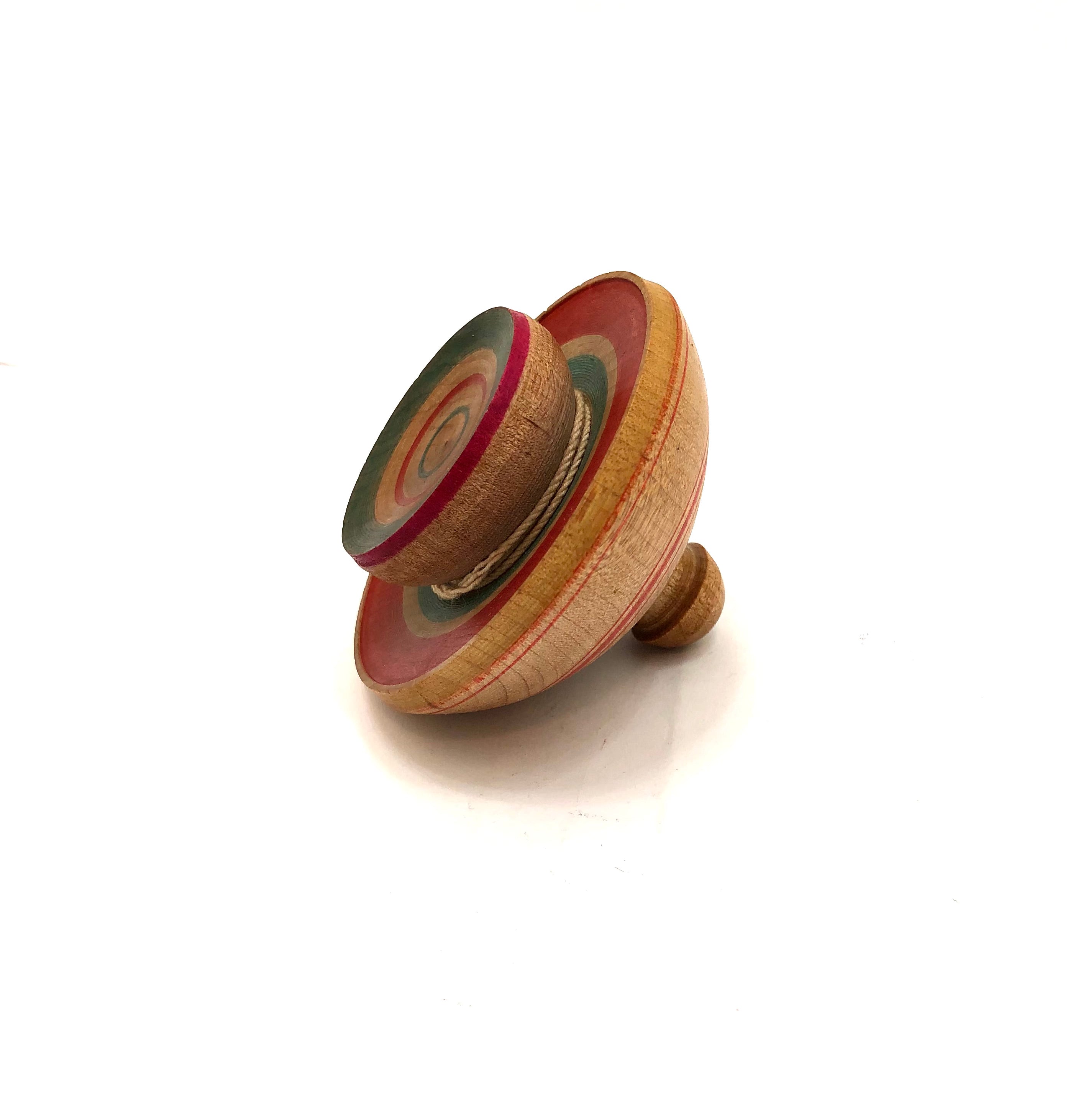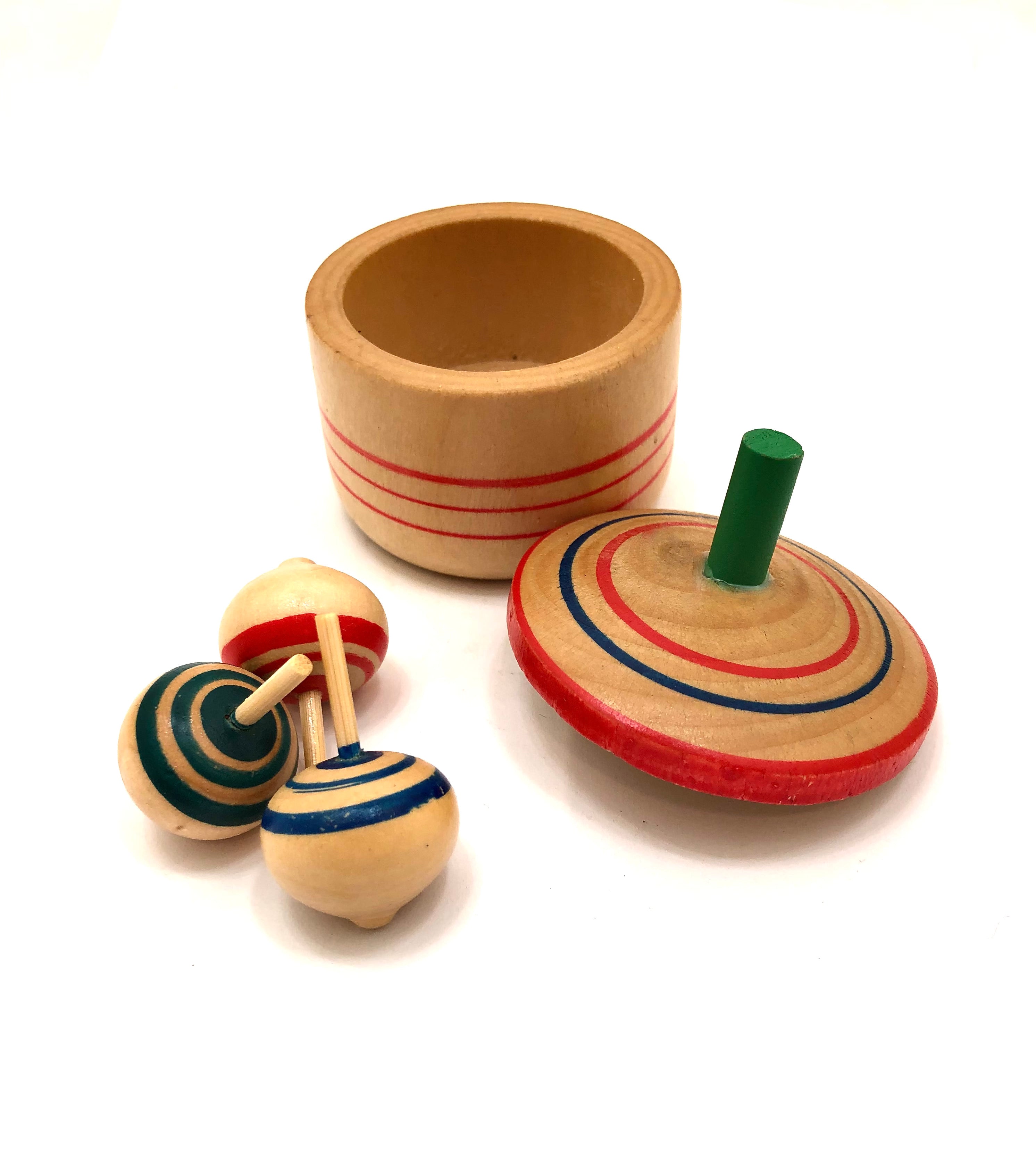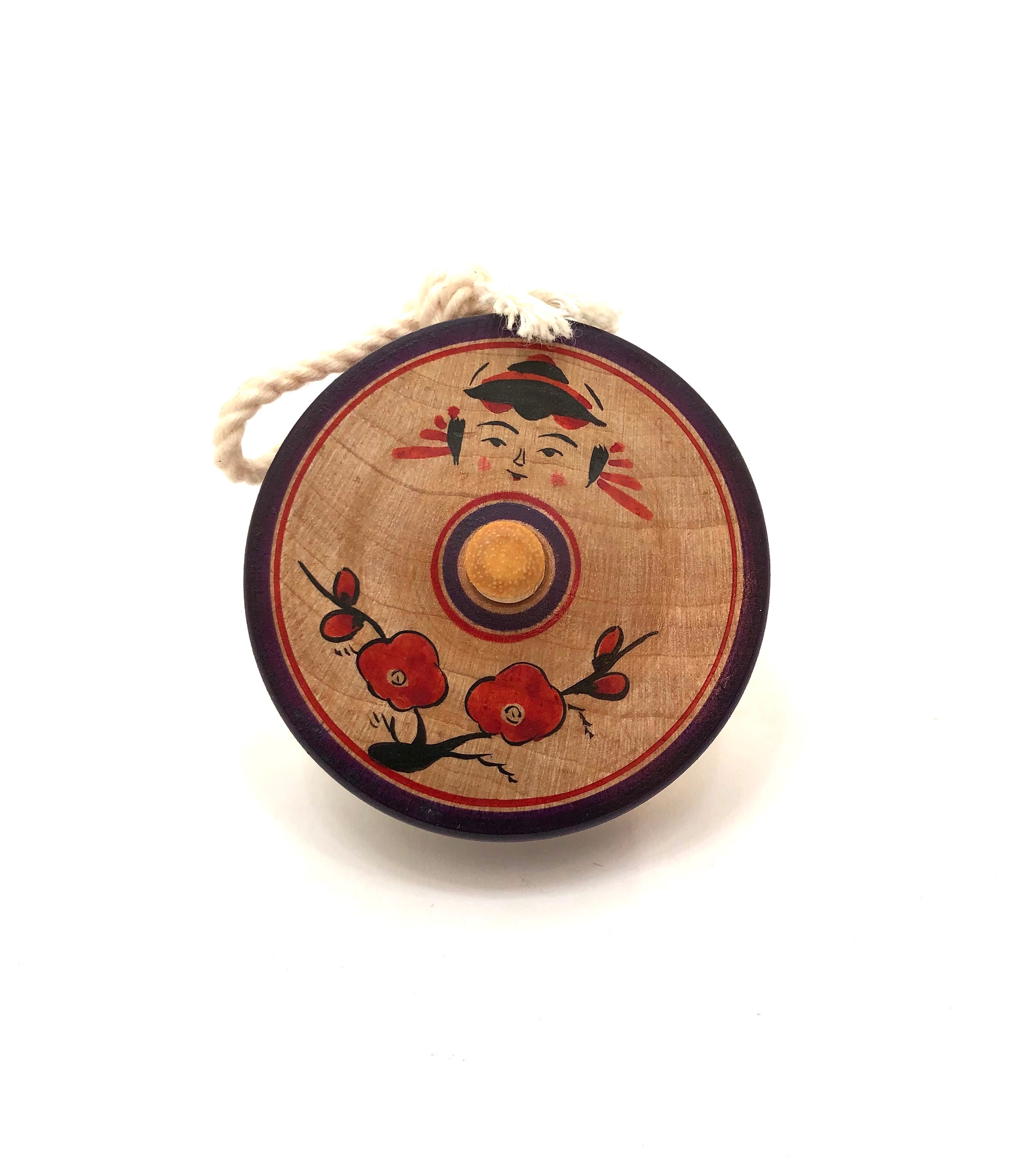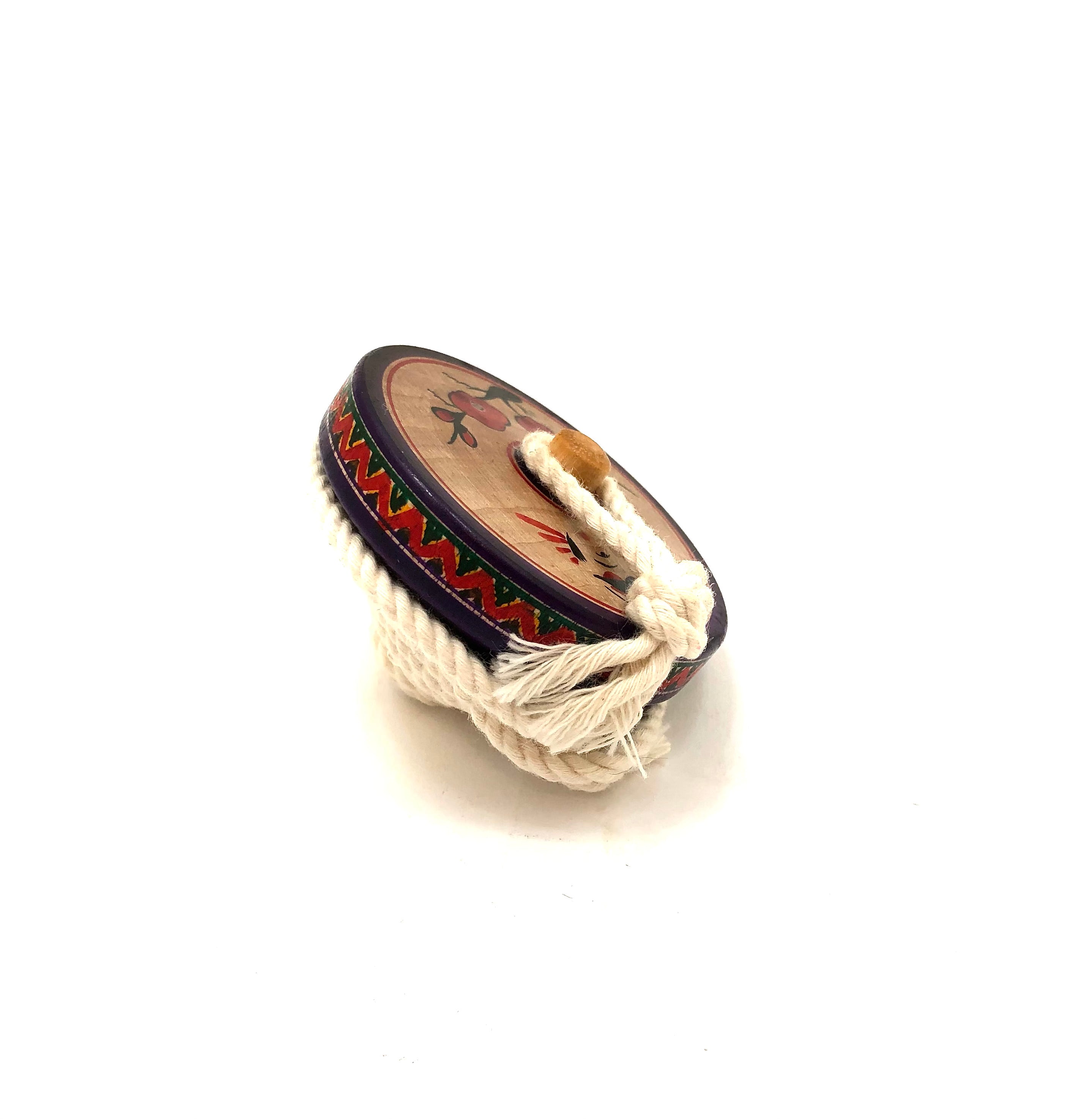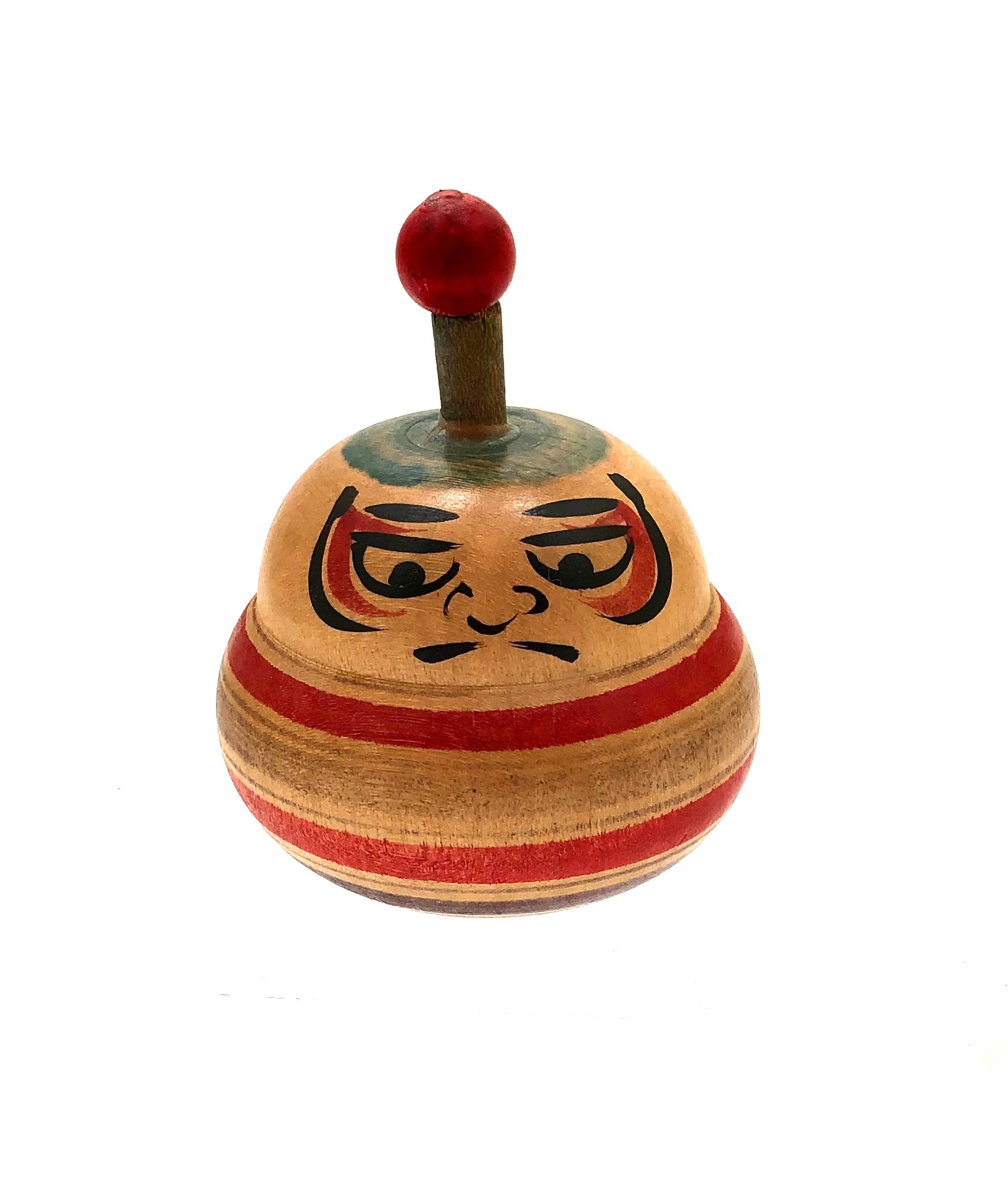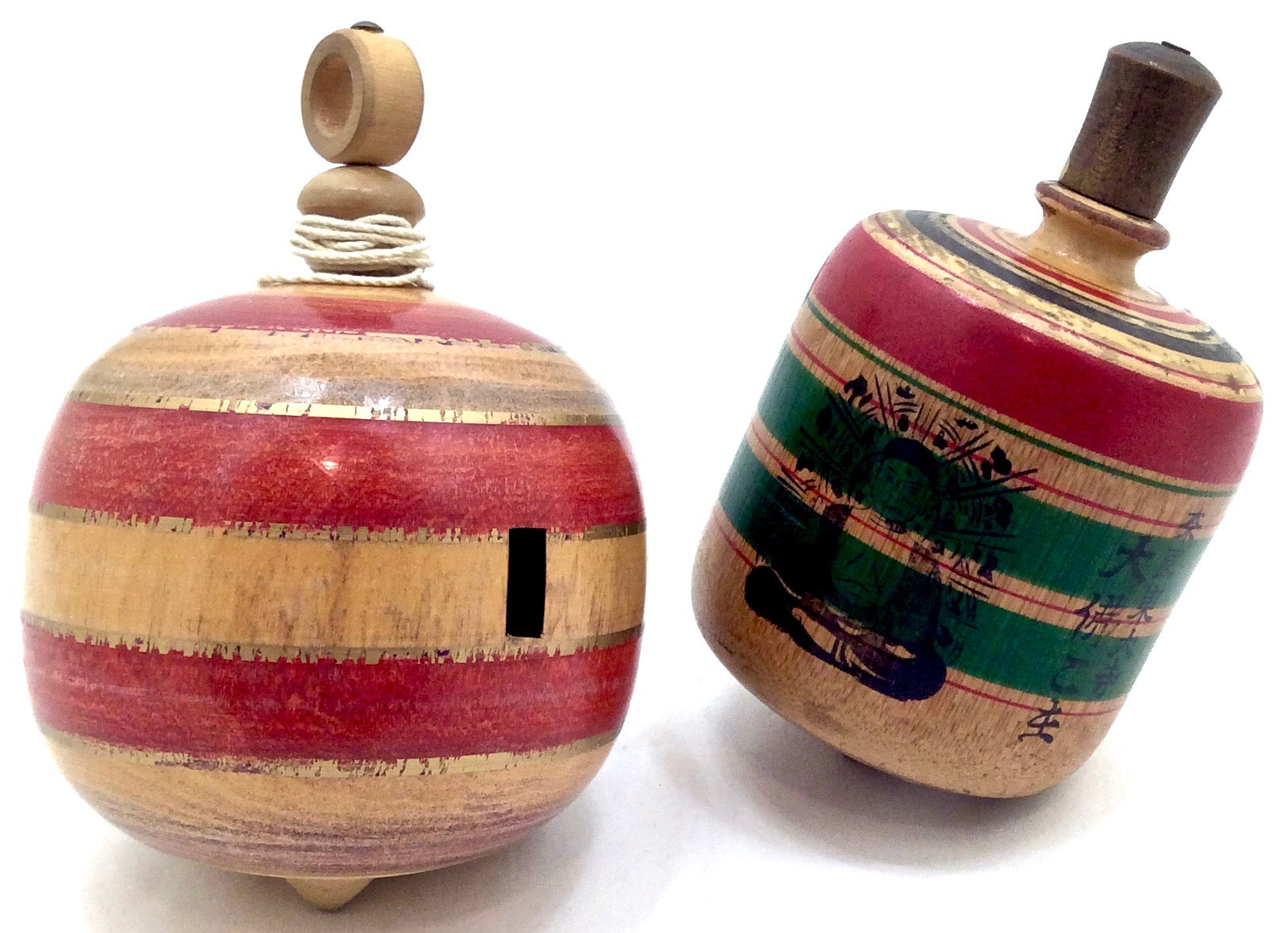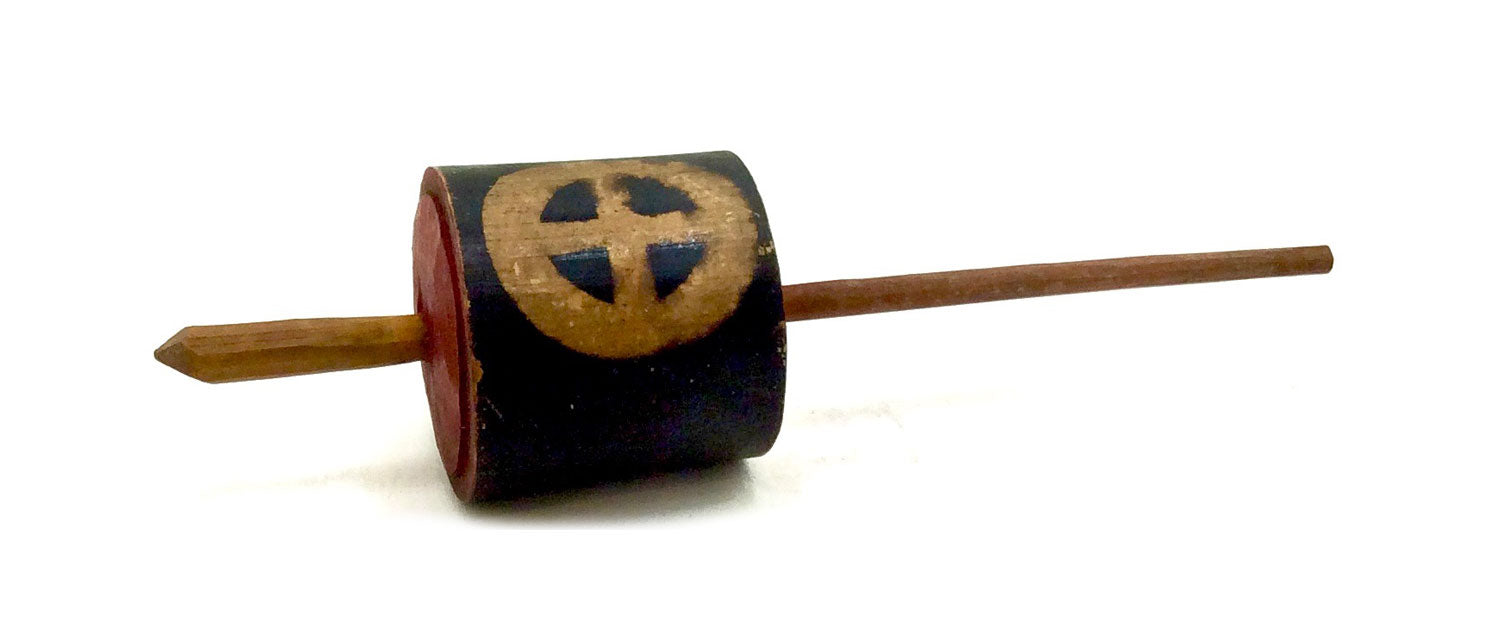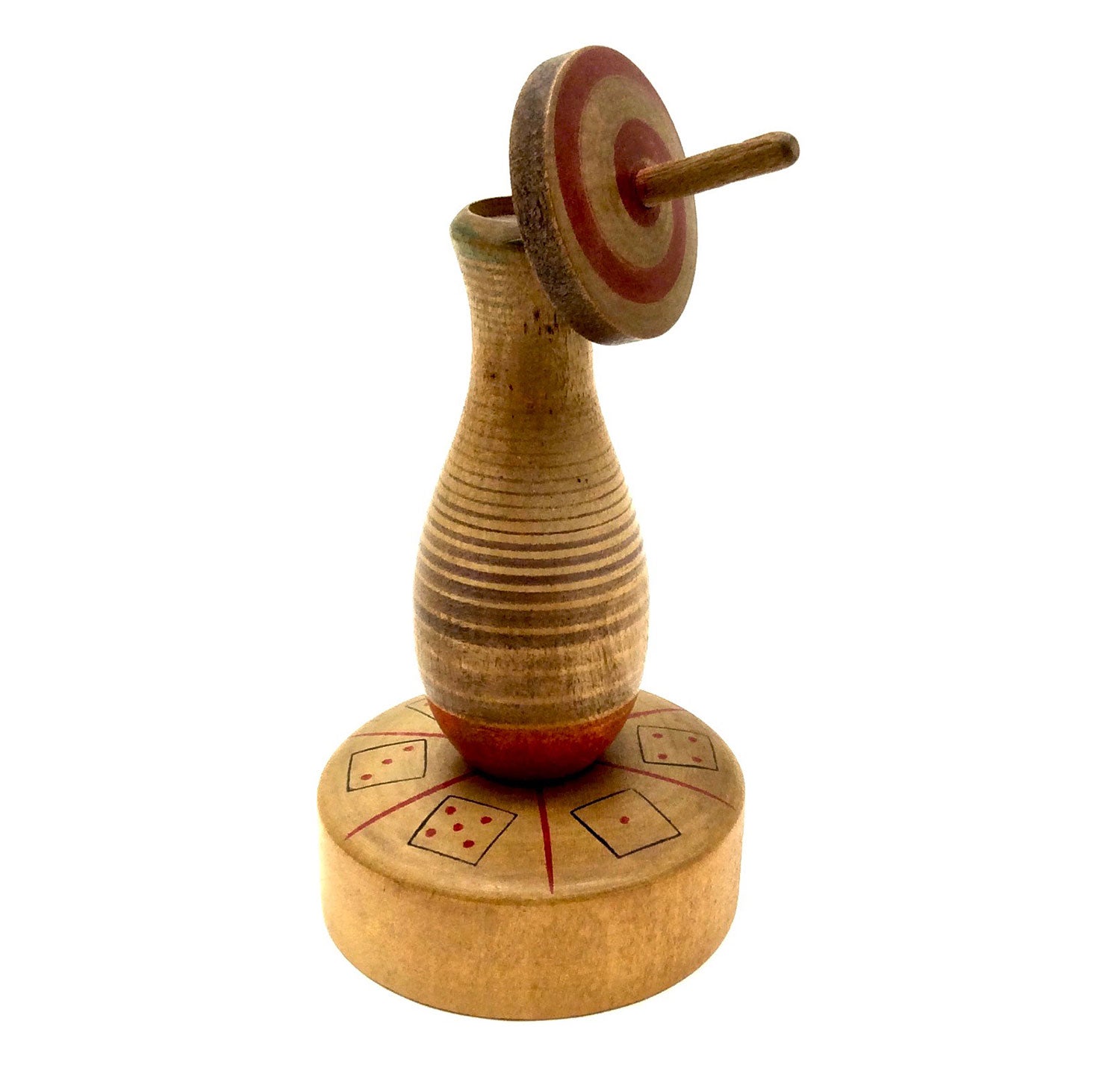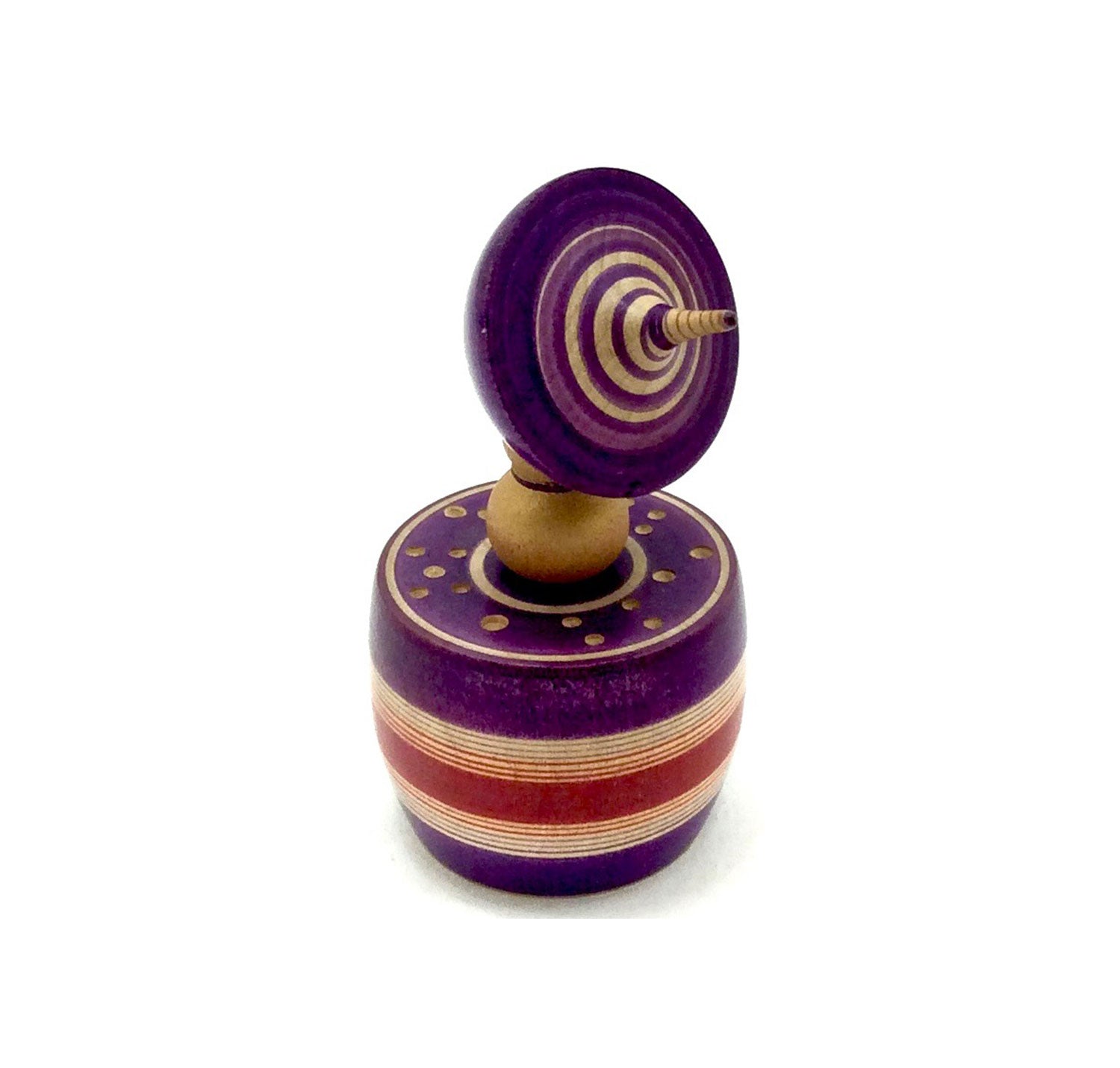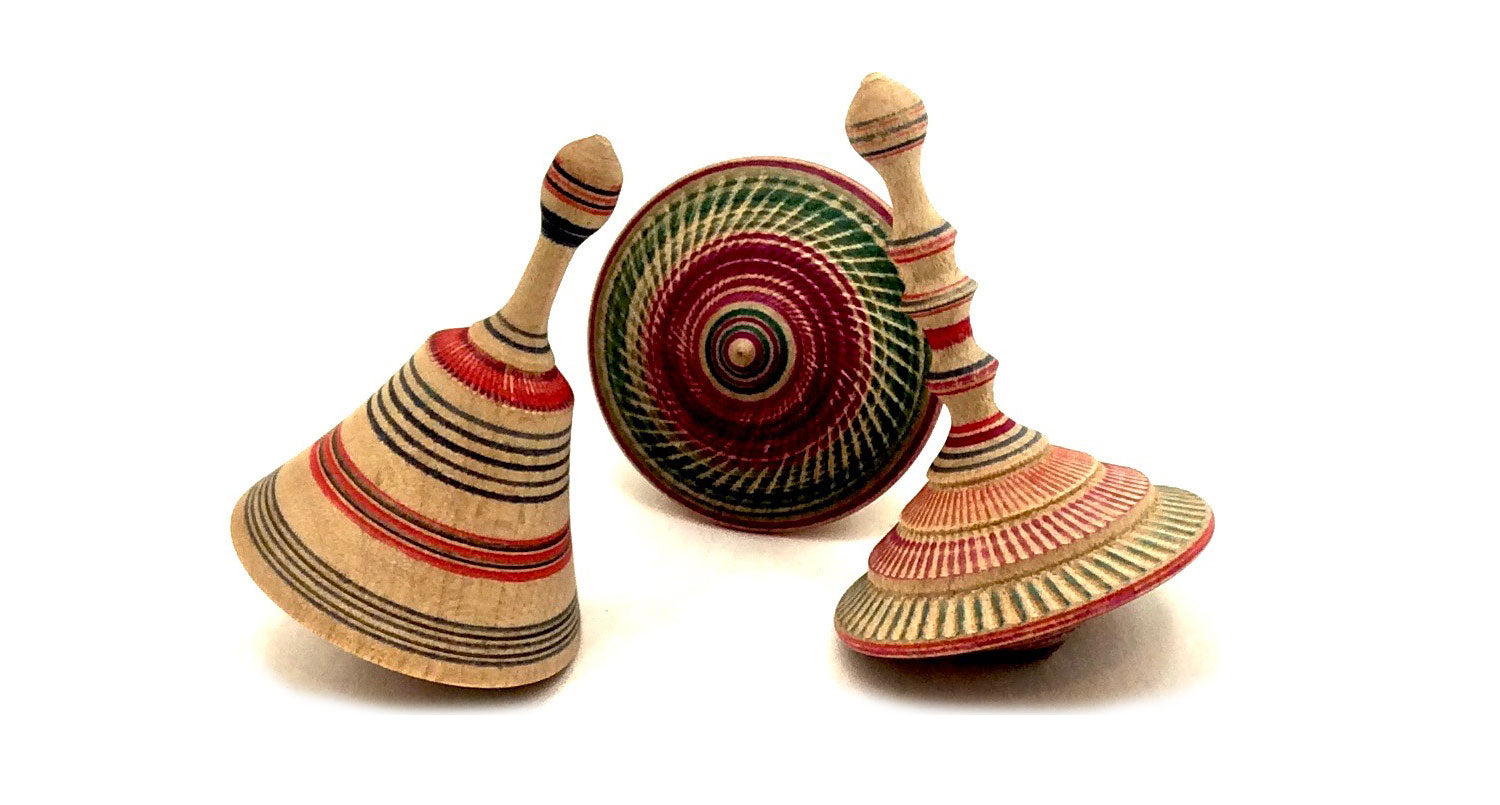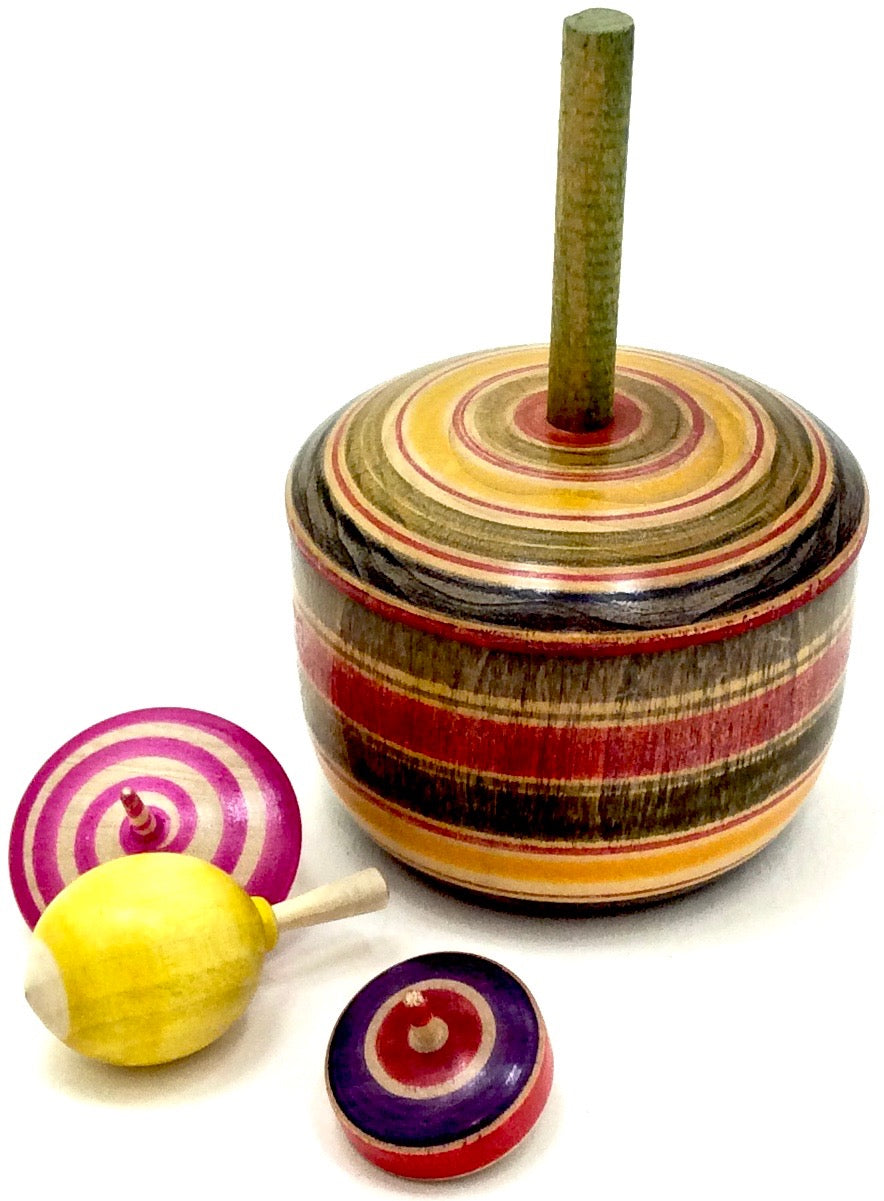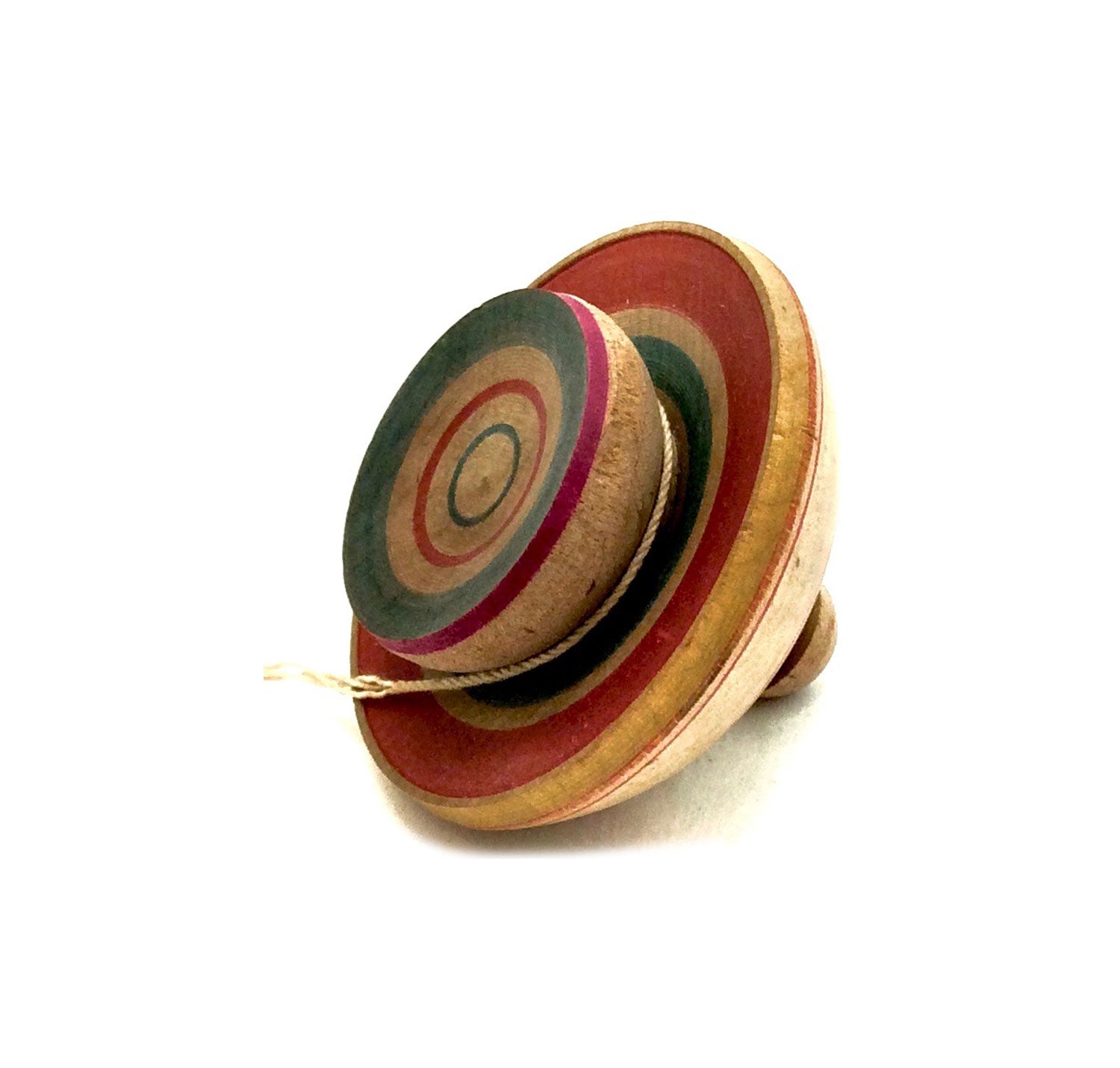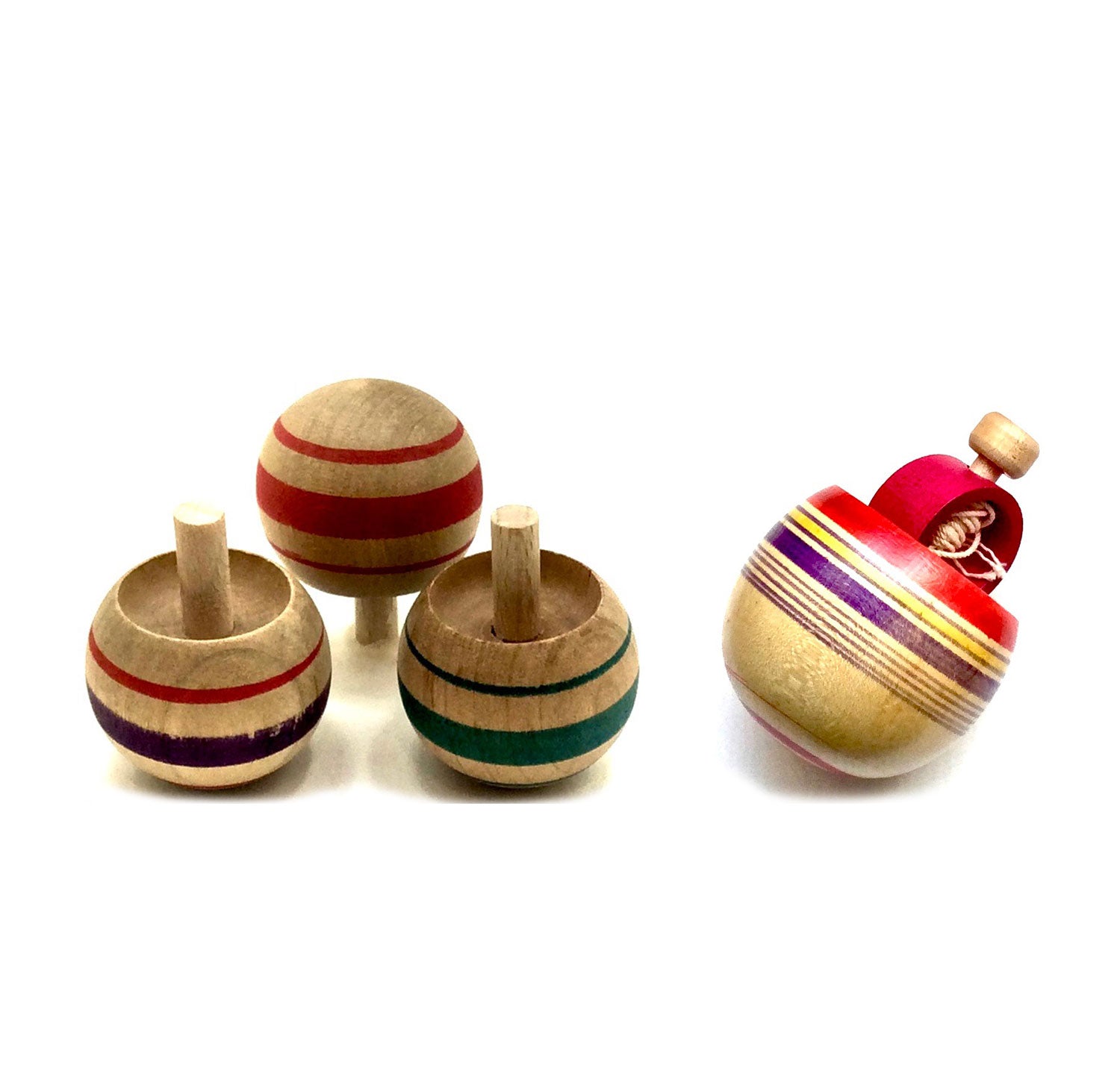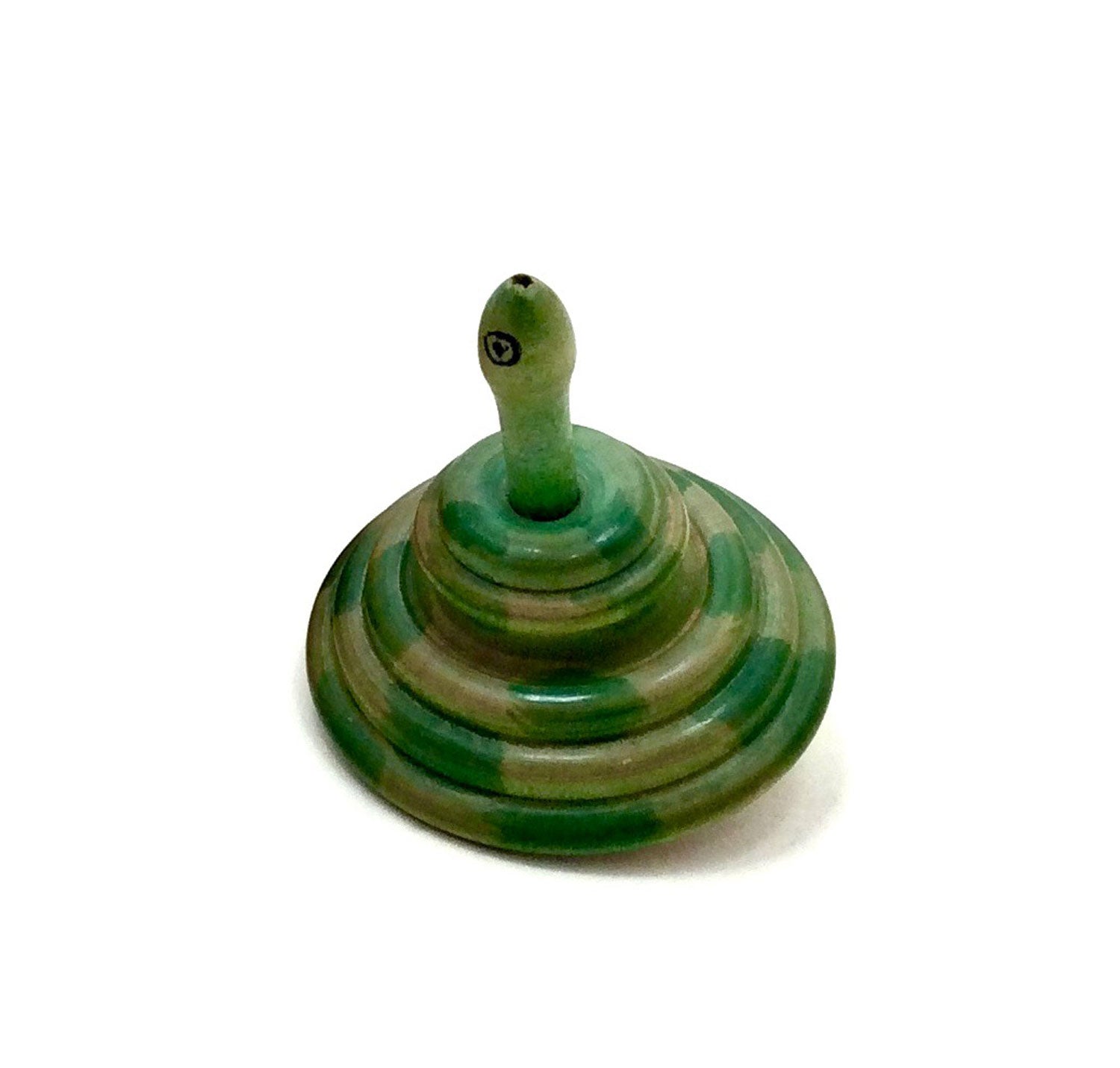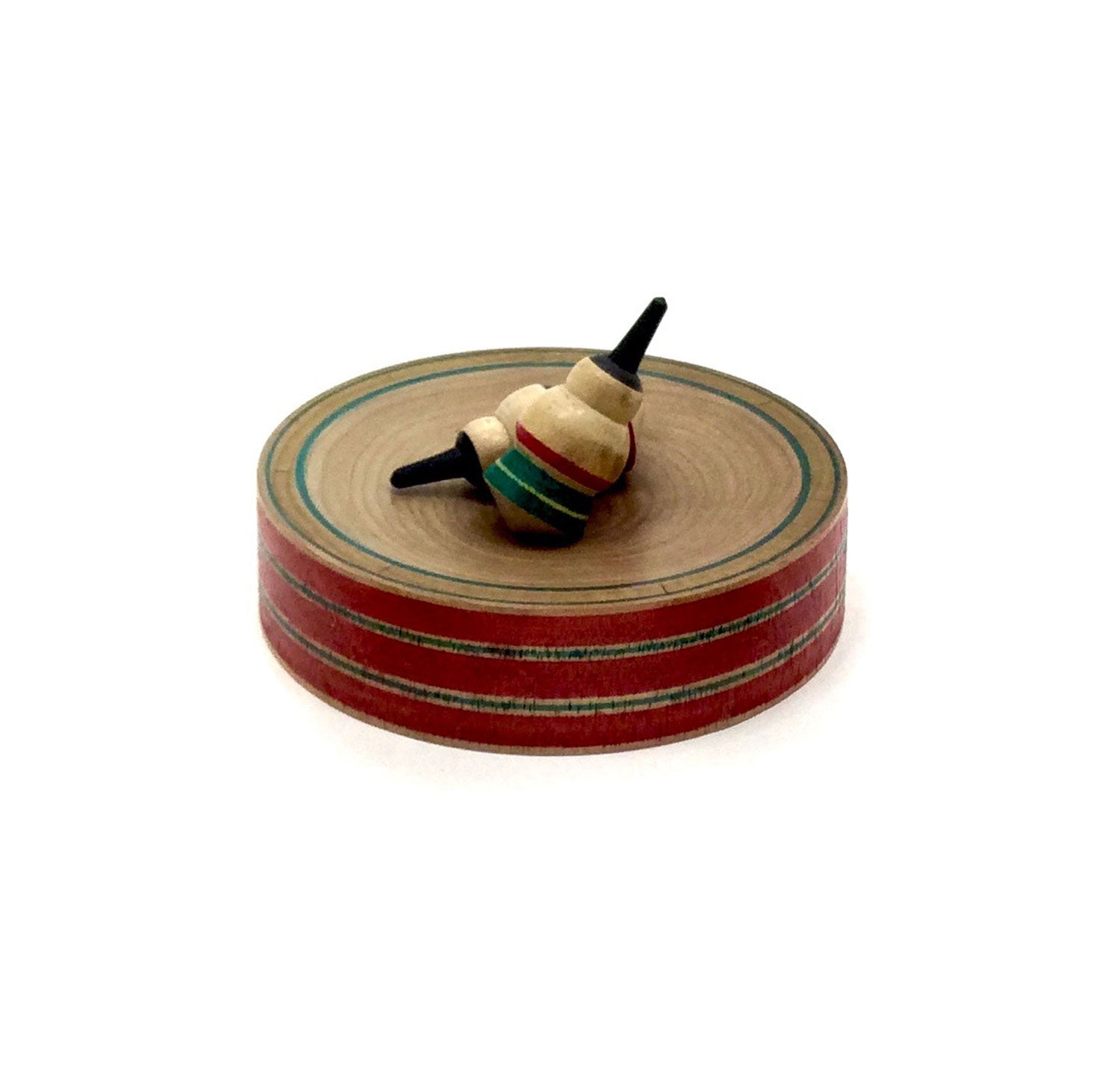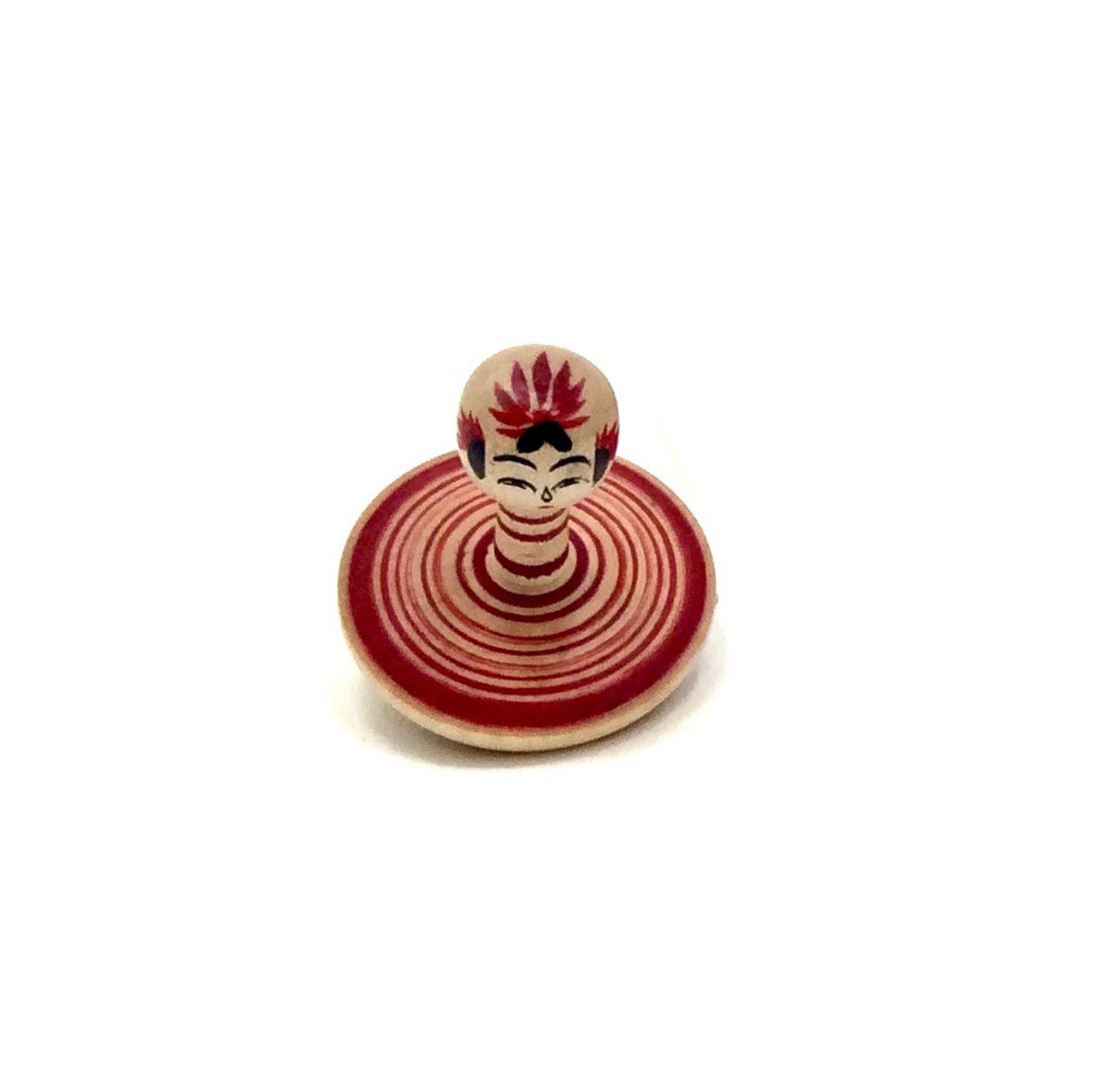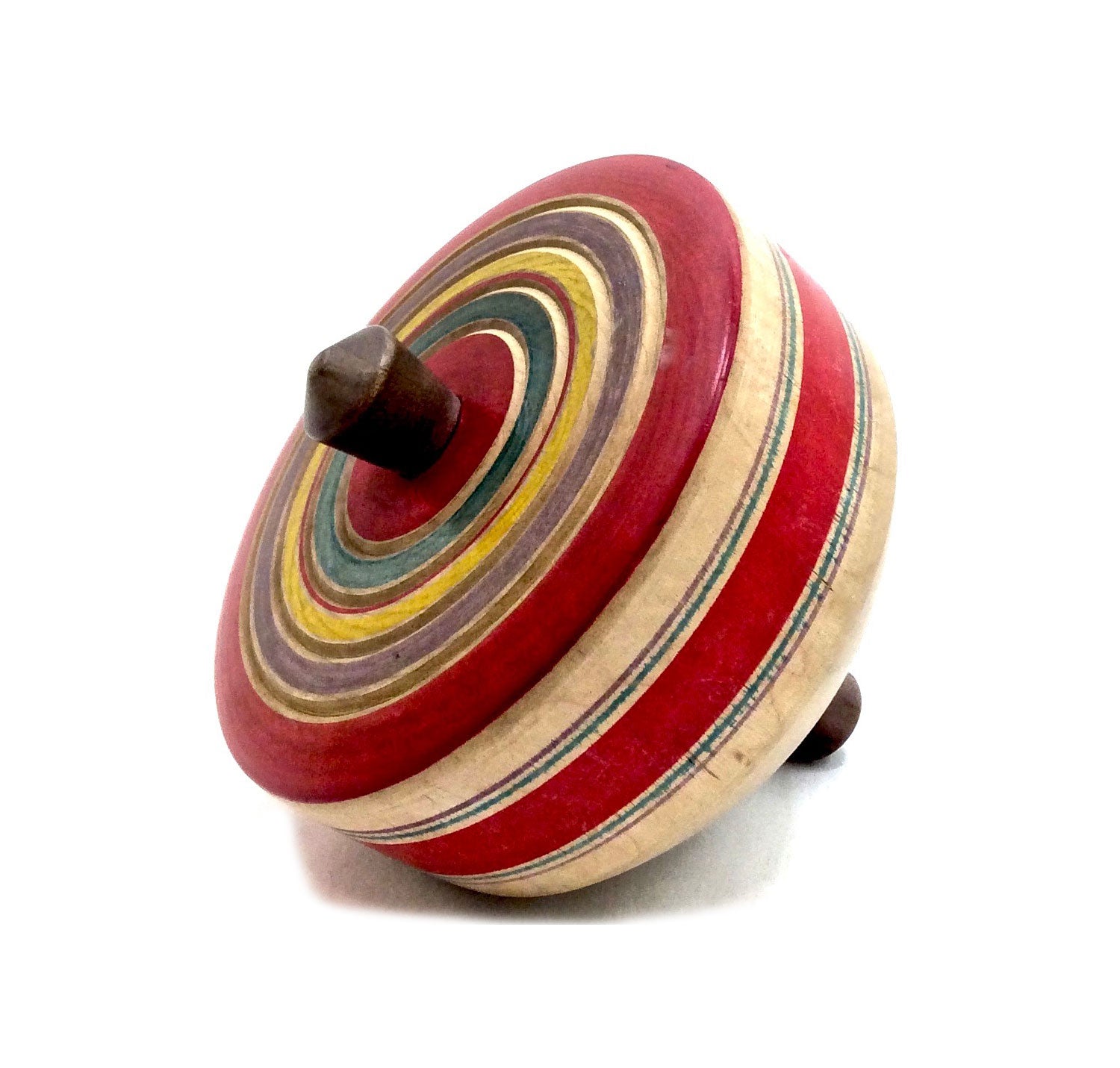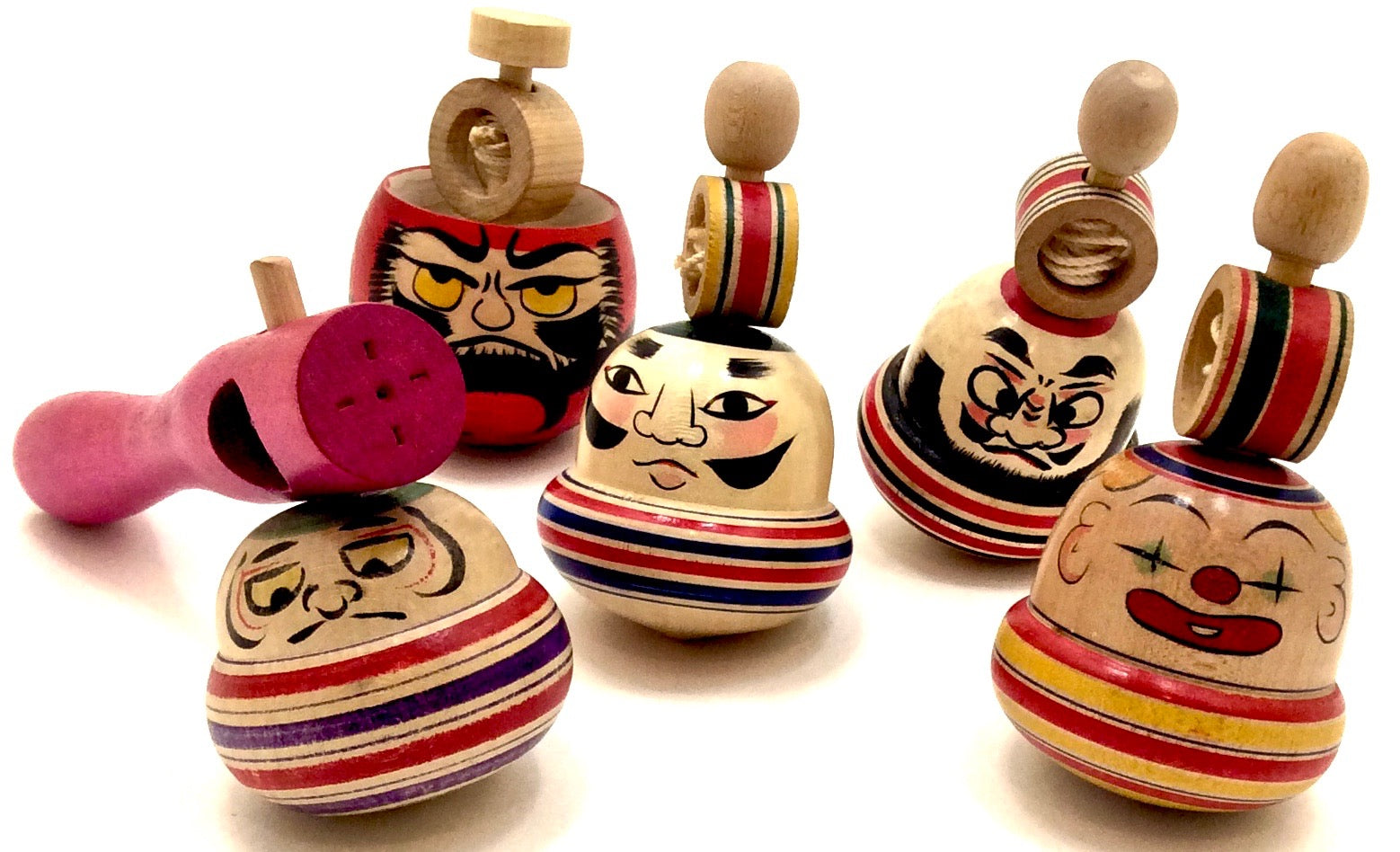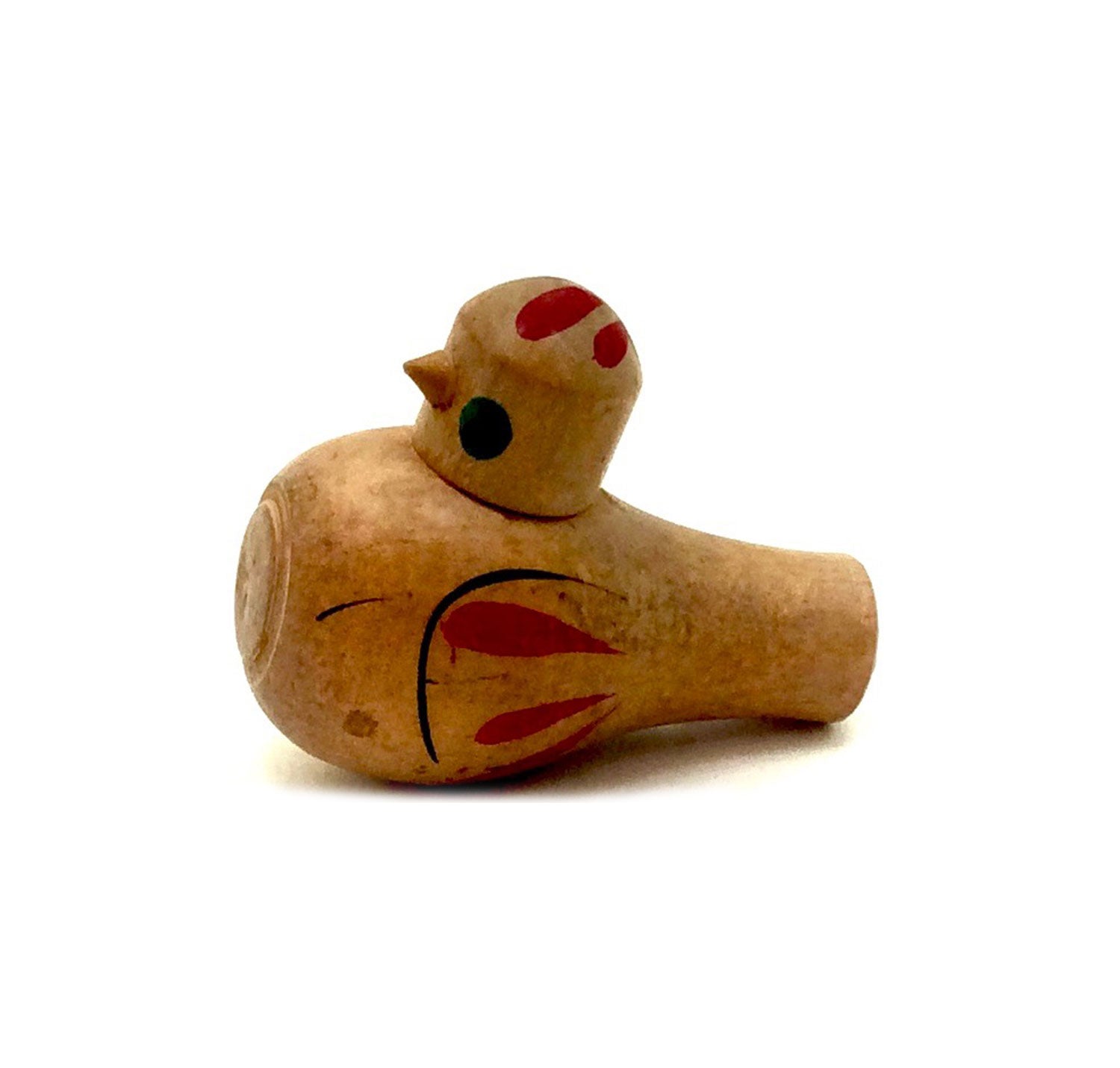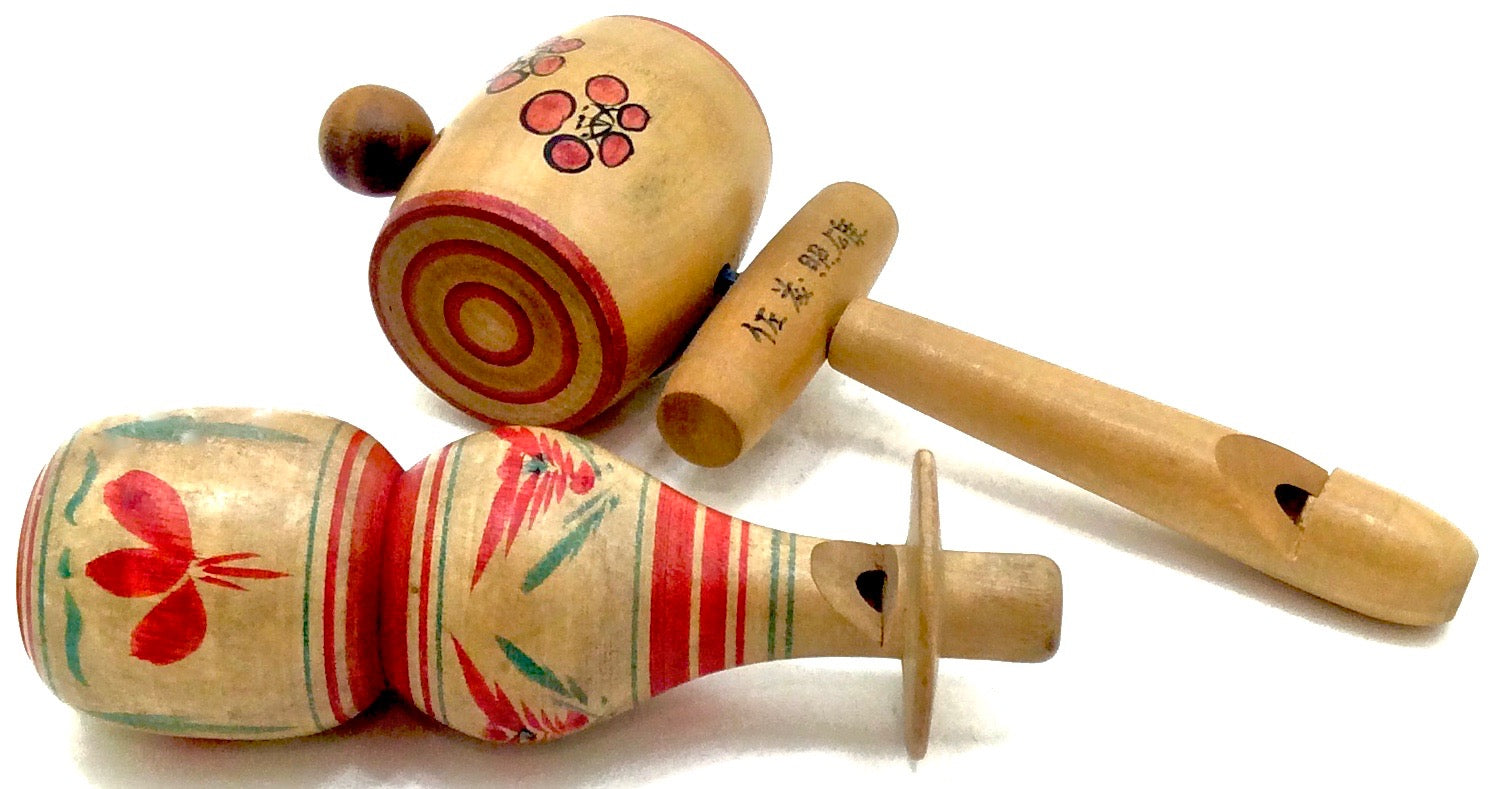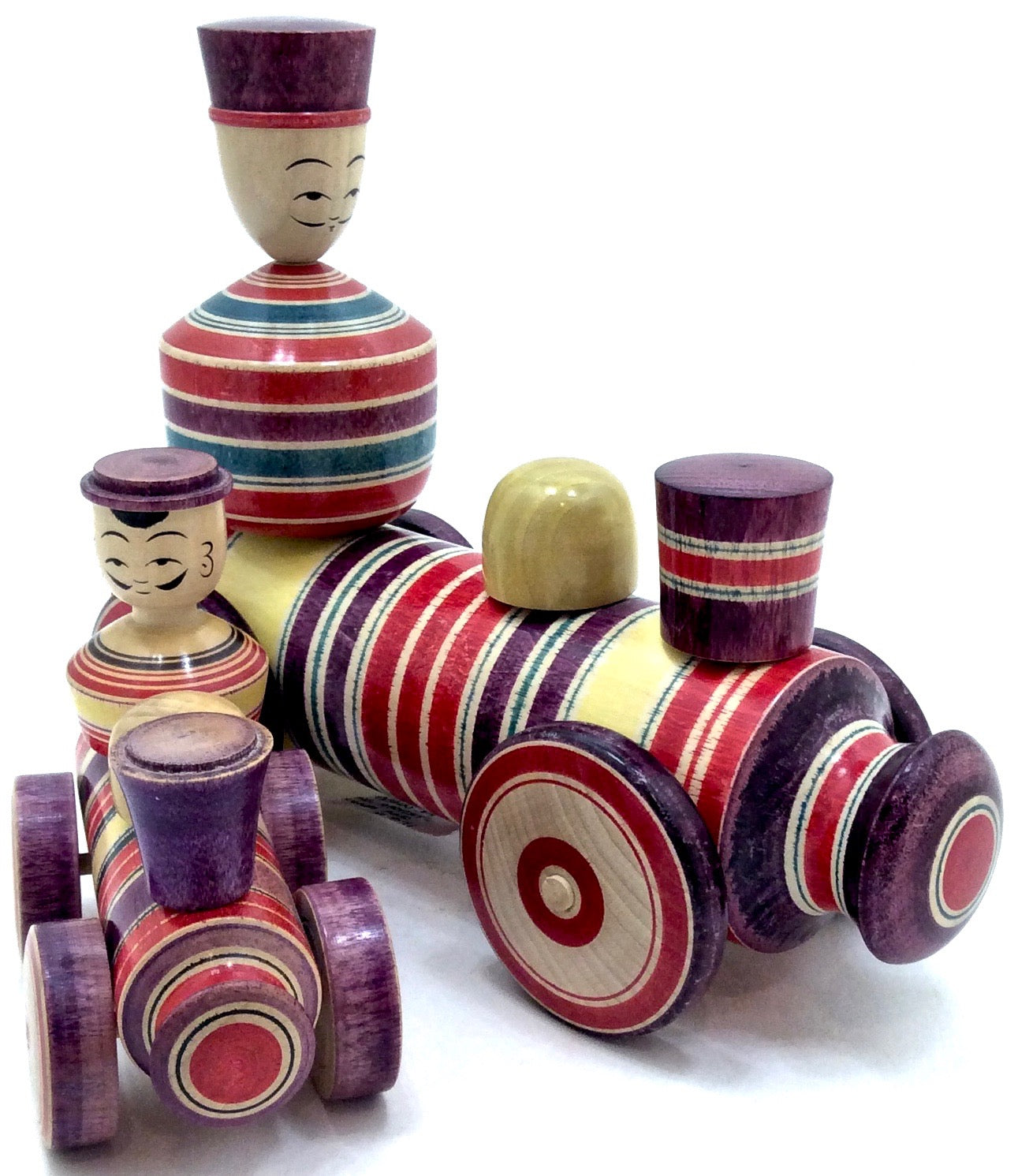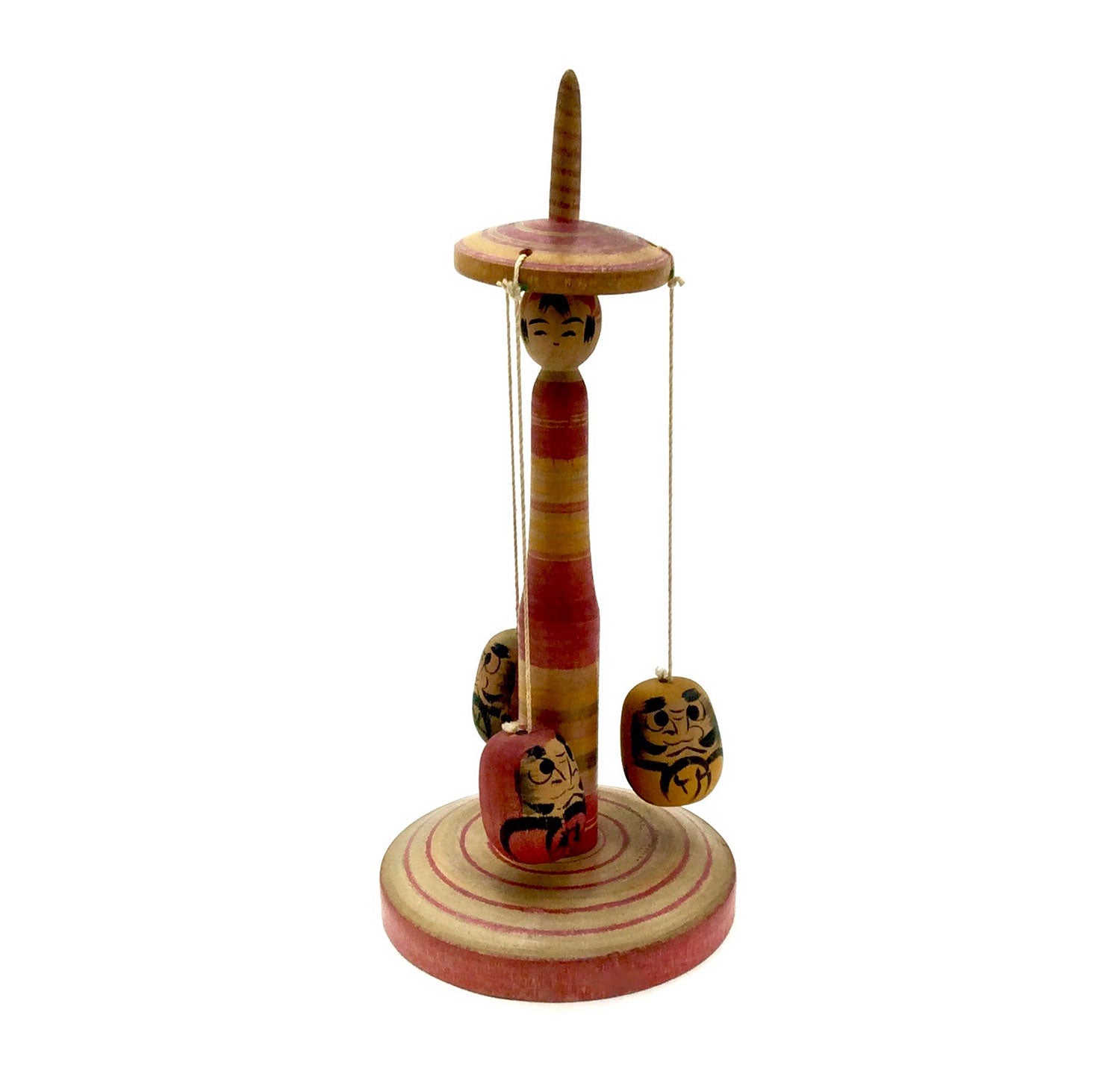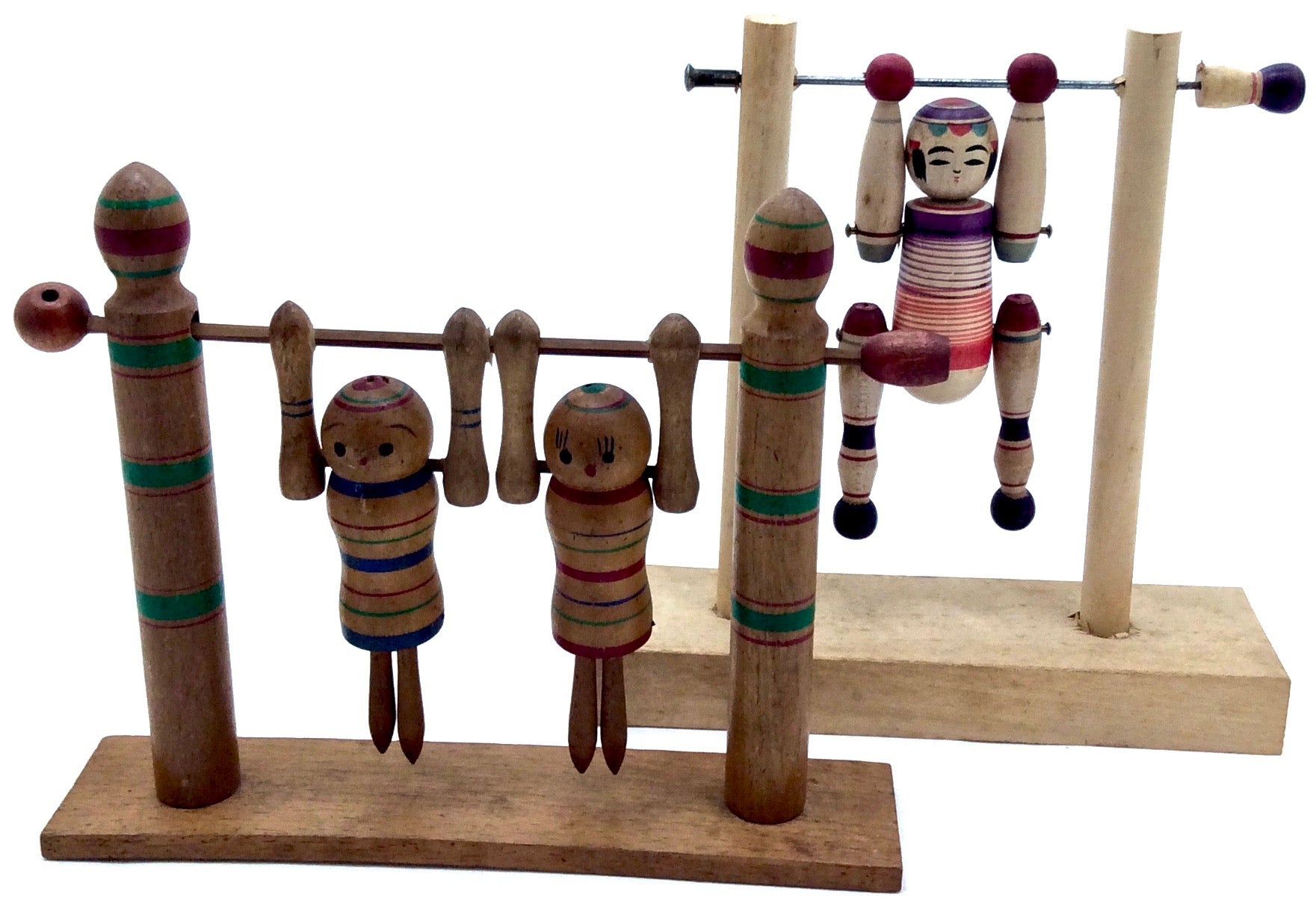Japanese traditional artful expressions in the form of toys circulated primarily around “Kyodo”, (the regional and native land), and today are known as “Kyodo Gangu”, (folk toys). Japanese interactive toys were often made of simple materials, or in the case of upper classes, in small quantities by skilled craftsmen, (Kiji-shi). Throughout the prosperous Edo period, (1615–1868), and the Meiji period, (1867-1912), when Japan opened its doors to the West, makers created a kaleidoscope of unique toys enjoyed by commoners, well-to-do farmers, and merchants, who brought them home for their children.
Additionally, Japanese toys have promoted creative play supporting cultural sensitivity through Interactive play and encouraging social skills which reflected popular styles of toys on children’s clothing, activities, and through social customs. Today, traditional toys, particularly wood toys and tops, bring back old memories, which develop children’s sensitivities and the “five” senses.
After two centuries of isolation, Japan re-opened to the world in the 1860s, at which point Westerners immediately became enamored with things Japanese. While Western tastemakers voraciously consumed prints, glassware, textiles, and other grown-up delights, it was toys that formed the backbone of Japan’s burgeoning export industry in the late nineteenth century. Masks, dolls, tops, and other fanciful works of the toymaker’s craft were rooted in Japanese mythology and regional cultures, nevertheless exuding both a still-uncommon artistry and a still-fascinating “otherness.” If this seems like kid’s stuff, bear in mind the causes of Japan’s transformation from a post-World War II shambles to perhaps the most advanced country in the world.
The one group of toys that spread like wildfire and were known as Kobe dolls produced during the Meiji period (1868-1912), were hand-carved, wooden mechanical dolls (automata) made exclusively in Japan. Later and particularly after WWII, Kobe toys continued to be created by local artisans as expensive souvenirs to be sold to foreigners arriving aboard luxury ships at the Port of Kobe. Travelers waiting to board these ships were also offered these souvenirs for purchase, and as a result, very few of the toys remained in Japan.
Japanese decorative folk art toys trace their lineage back to prehistoric examples of miniaturized humans who were thought to have religious or magical significance. Throughout Japan's history, the doll and toy artifacts you see have been used by different members of Japanese society for a variety of reasons. The Japanese doll, for instance, is not only a child's plaything, but Buddhist monks would place dolls in dioramas to explain allegories, or dolls may be used to portray a significant event, such as the investiture of an emperor.
Later in history, the simple, cylindrical doll with a round head and no arms or legs became a favorite folk toy in Japan. Believed to have been originally made by farmers and temple woodcarvers, the Kokeshi doll is often painted with a variety of motifs depicting seasonal designs and beautifully decorated images of historical figures such as samurai incorporated on Kimono and Haori textiles. And finally, a group of folk toys that were originally religious is the Daruma doll. Regardless of their source, folk toys continually provide amusement and admiration to people of all ages and today are the “hottest” collectibles from Japan.
Japanese traditional artful expressions in the form of toys circulated primarily around “Kyodo”, (the regional and native land), and today are known as “Kyodo Gangu”, (folk toys). Japanese interactive toys were often made of simple materials, or in the case of upper classes, in small quantities by skilled craftsmen, (Kiji-shi). Throughout the prosperous Edo period, (1615–1868), and the Meiji period, (1867-1912), when Japan opened its doors to the West, makers created a kaleidoscope of unique toys enjoyed by commoners, well-to-do farmers, and merchants, who brought them home for their children.
Additionally, Japanese toys have promoted creative play supporting cultural sensitivity through Interactive play and encouraging social skills which reflected popular styles of toys on children’s clothing, activities, and through social customs. Today, traditional toys, particularly wood toys and tops, bring back old memories, which develop children’s sensitivities and the “five” senses.
After two centuries of isolation, Japan re-opened to the world in the 1860s, at which point Westerners immediately became enamored with things Japanese. While Western tastemakers voraciously consumed prints, glassware, textiles, and other grown-up delights, it was toys that formed the backbone of Japan’s burgeoning export industry in the late nineteenth century. Masks, dolls, tops, and other fanciful works of the toymaker’s craft were rooted in Japanese mythology and regional cultures, nevertheless exuding both a still-uncommon artistry and a still-fascinating “otherness.” If this seems like kid’s stuff, bear in mind the causes of Japan’s transformation from a post-World War II shambles to perhaps the most advanced country in the world.
The one group of toys that spread like wildfire and were known as Kobe dolls produced during the Meiji period (1868-1912), were hand-carved, wooden mechanical dolls (automata) made exclusively in Japan. Later and particularly after WWII, Kobe toys continued to be created by local artisans as expensive souvenirs to be sold to foreigners arriving aboard luxury ships at the Port of Kobe. Travelers waiting to board these ships were also offered these souvenirs for purchase, and as a result, very few of the toys remained in Japan.
Japanese decorative folk art toys trace their lineage back to prehistoric examples of miniaturized humans who were thought to have religious or magical significance. Throughout Japan's history, the doll and toy artifacts you see have been used by different members of Japanese society for a variety of reasons. The Japanese doll, for instance, is not only a child's plaything, but Buddhist monks would place dolls in dioramas to explain allegories, or dolls may be used to portray a significant event, such as the investiture of an emperor.
Later in history, the simple, cylindrical doll with a round head and no arms or legs became a favorite folk toy in Japan. Believed to have been originally made by farmers and temple woodcarvers, the Kokeshi doll is often painted with a variety of motifs depicting seasonal designs and beautifully decorated images of historical figures such as samurai incorporated on Kimono and Haori textiles. And finally, a group of folk toys that were originally religious is the Daruma doll. Regardless of their source, folk toys continually provide amusement and admiration to people of all ages and today are the “hottest” collectibles from Japan.

